#Death of Photius Patriarch of Constantinople
Text
Saints&Reading: Saturday, February 17, 2024
february 4_february 17
VENERABLE ISIDOR PELUSIUM, MONK (436-440)
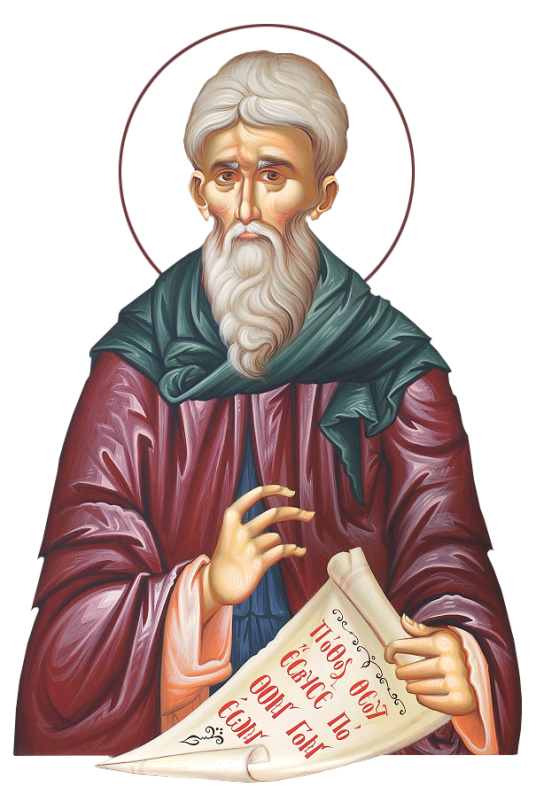
Saint Isidore of Pelusium lived during the fourth-fifth centuries. He was a native of Alexandria, and was raised among pious Christians. He was a relative of Theophilus, Archbishop of Alexandria, and of his successor, Saint Cyril (January 18). While still a youth he quit the world and withdrew to Egypt to Mount Pelusium, which became the site of his monastic efforts.
Saint Isidore’s spiritual wisdom and strict asceticism, combined with his broad learning and innate knowledge of the human soul, enabled him to win the respect and love of his fellow monks in a short time. They chose him as their head and had him ordained a priest (the earliest sources for his life, however, say nothing of him being an igumen).
Following the example of Saint John Chrysostom, whom he had managed to see and hear during a trip to Constantinople, Saint Isidore devoted himself primarily to Christian preaching, that “practical wisdom” which, in his own words, is both “the foundation of the edifice and the edifice itself”, while logic is “its embellishment, and contemplation its crown”.
He was a teacher and a willingly provided counsel for anyone who turned to him for spiritual encouragement, whether it was a simple man, a dignitary, a bishop, the Patriarch of Alexandria, or even the emperor. He left behind about 10,000 letters, of which 2,090 have survived. A large portion of these letters reveal profound theological thought and contain morally edifying interpretations of Holy Scripture. Saint Photius (February 6) calls Isidore a model of priestly and ascetical life, and also a master of style.
Saint Isidore’s love for Saint John Chrysostom resulted in his support of Saint John when he was persecuted by the empress Eudoxia and Archbishop Theophilus. After the death of Saint John, Saint Isidore persuaded Theophilus’ successor Saint Cyril to inscribe the name of Saint John Chrysostom into the Church diptychs as a confessor. Through the initiative of Saint Isidore the Third Ecumenical Council was convened at Ephesus (431), at which the false teaching of Nestorius concerning the person of Jesus Christ was condemned.
Saint Isidore lived into old age and died around the year 436. The Church historian Evagrius (sixth century) writes of Saint Isidore, “his life seemed to everyone the life of an angel upon the earth.” Another historian, Nikēphóros Callistus (ninth century), praises Saint Isidore thus: “He was a vital and inspired pillar of monastic rules and divine vision, and as such he presented a very lofty image of most fervent example and spiritual teaching.”
VENERABLE NICHOLAS THE CONFESSOR, ABBOT OF THE STUDION (868)

Saint Nicholas the Confessor, Igumen of the Studion Monastery, lived during the ninth century. He was born on the island of Crete in the village of Kedonia into a Christian family. When he was ten, his parents sent him to Constantinople to his uncle, Saint Theophanes (October 11), who was a monk at the Studion monastery. With the approval of Saint Theodore (November 11), the head of the Studion monastery, the boy was enrolled in the monastery school. When he finished school at sixteen years of age, he was tonsured a monk. After several years, he was ordained a priest.
During this time there was a fierce persecution, initiated by the Byzantine emperor Leo the Armenian (813-820), against those who venerated the holy icons. Saint Nicholas and Saint Theodore the Studite were repeatedly locked up in prison, tortured in various ways, and humiliated. However, they zealously continued to defend Orthodoxy.
Under the holy Empress Theodora (February 11), who ruled the realm while her son Michael was still a minor, icon veneration was restored, and a time of relative peace followed. Saint Nicholas returned to the Studite monastery and was chosen its head. But this calm did not last very long.
The Empress Theodora was removed from the throne, and the emperor’s uncle, Bardas, a man who defiled himself by open cohabitation with his son’s wife, came to power. The attempts of Patriarch Ignatius (October 23) to restrain the impiety of Bardas proved unsuccessful. On the contrary, he was deposed from the patriarchal throne and sent into exile.
Unwilling to witness the triumph of iniquity, Saint Nicholas left Constantinople. He spent seven years at various monasteries. Later on, he returned as a prisoner to the Studite monastery, where he spent two years imprisoned, until the death of the emperor Michael (855-867) and Bardas. When the emperor Basil I the Macedonian (867-886) ascended the throne, Saint Nicholas was set free, and again became igumen on the orders of the emperor. Because of his life as a confessor and ascetic he received from God the gift of healing, which continued even after his repose in the year 868.
Source: Orthodox Church in America_ OCA
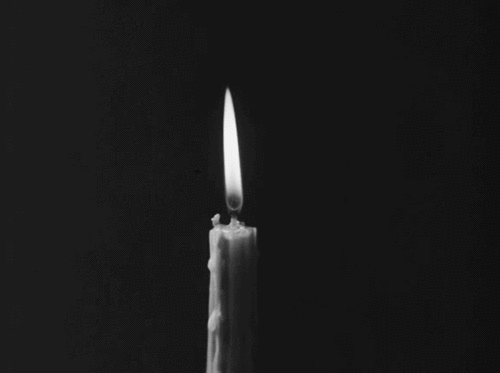

1 THESSALONIANS 5:14-23
14 Now we exhort you, brethren, warn those who are unruly, comfort the fainthearted, uphold the weak, be patient with all. 15 See that no one renders evil for evil to anyone, but always pursue what is good both for yourselves and for all. 16 Rejoice always, 17 pray without ceasing, 18 in everything give thanks; for this is the will of God in Christ Jesus for you. 19 Do not quench the Spirit. 20 Do not despise prophecies. 21 Test all things; hold fast what is good. 22 Abstain from every form of evil. 23 Now may the God of peace Himself sanctify you completely; and may your whole spirit, soul, and body be preserved blameless at the coming of our Lord Jesus Christ.
LUKE 17:3-10
3 Take heed to yourselves. If your brother sins against you, rebuke him; and if he repents, forgive him. 4 And if he sins against you seven times in a day, and seven times in a day returns to you, saying, 'I repent,' you shall forgive him. 5 And the apostles said to the Lord, "Increase our faith." 6 So the Lord said, "If you have faith as a mustard seed, you can say to this mulberry tree, 'Be pulled up by the roots and be planted in the sea,' and it would obey you. 7 And which of you, having a servant plowing or tending sheep, will say to him when he has come in from the field, 'Come at once and sit down to eat'? 8 But will he not rather say to him, 'Prepare something for my supper, and gird yourself and serve me till I have eaten and drunk, and afterward you will eat and drink'? 9 Does he thank that servant because he did the things that were commanded him? I think not. 10 So likewise you, when you have done all those things which you are commanded, say, 'We are unprofitable servants. We have done what was our duty to do.'
#orthodoxy#orthodoxchristianity#easternorthodoxchurch#originofchristianity#spirituality#holyscriptures#gospel#bible#wisdom#saints
2 notes
·
View notes
Text
Today in Christian History

Today is Wednesday, February 6th, the 37th day of 2019. There are 328 days left in the year.
Today’s Highlight in History:
897: (Probable date) Death of Photius, Patriarch of Constantinople, one of the most learned scholars of his day. He had been an enemy of Rome and excommnunicated Pope Nicholas I and his associates, one of the events that will lead to the schism between the eastern and western branches of the church.
1481: First auto-da-fé in Spain, a ritual of public penance of condemned heretics and apostates. Such events would often be accompanied by the execution of the “heretics.”
1497: Death on the European continent of Jean de Ockeghem, a composer of Christian music, including a well-known requiem and many motets.
1564: John Calvin preaches his last sermon.
1812: On a bitterly cold day, Adoniram Judson, Gordon Hall, Luther Rice, Samuel Newell, and Samuel Nott are ordained for foreign service at Salem, Massachusetts, the first foreign missionaries of the United States.
1857: Presbyterian minister Edward Norris Kirk arrives in Paris to establish its American Church. He was well-known in the United States as a preacher, revivalist, and author. Among those converted under his ministry was Dwight L. Moody.
1870: Death in Bristol, England, of Mary Groves Müller, the faith-filled and godly wife of George Müller.
1876: Admission of Daniel Olubi as a priest in Nigeria’s Anglican Church. He had already shown himself an effective worker in the Anglican mission and will become even more influential as the years pass, establishing the gospel among his people.
1910: Death in Washington, DC, of Harriet Eugenia Peck Buell, author of the hymn “A Child of the King.”
#Today in Christian History#February 6#Death of Photius Patriarch of Constantinople#First auto-da-fé in Spain#death of Jean de Ockeghem#John Calvin preaches his last sermon#Adoniram Judson Gordon Hall Luther Rice Samuel Newell and Samuel Nott are ordained as missionaries#Edward Norris Kirk arrives in Paris#death of Mary Groves Müller#Admission of Daniel Olubi as a priest in Nigeria’s Anglican Church#death of Harriet Eugenia Peck Buell
6 notes
·
View notes
Text
Today, the Church remembers Sts. Cyril, Priest and Monk, and Methodius, Bishop, both Missionaries.
Orate pro nobis.
Saints Cyril and Methodius (AD 826–869, 815–885) were two brothers who were Byzantine Christian theologians and Christian missionaries. Through their work they influenced the cultural development of all Slavs, for which they received the title "Apostles to the Slavs".
They are credited with devising the Glagolitic alphabet, the first alphabet used to transcribe Old Church Slavonic. After their deaths, their pupils continued their missionary work among other Slavs. Both brothers are venerated in the Orthodox Church as saints with the title of "equal-to-apostles". In 1880, Pope Leo XIII introduced their feast into the calendar of the Roman Catholic Church. In 1980, Pope John Paul II declared them co-patron saints of Europe, together with Benedict of Nursia.
The two brothers were born in Thessalonica (located in present-day Greece) – Cyril in about AD 827–828 and Methodius about 815–820. Cyril was reputedly the youngest of seven brothers; he was born Constantine, but was given the name Cyril upon becoming a monk in Rome shortly before his death, according to the Vita Cyrilli ("The Life of Cyril"). Methodius was born Michael and was given the name Methodius upon becoming a monk at Mysian Olympus (present-day Uludağ), in northwest Turkey. Their father was Leo, a droungarios of the Byzantine theme of Thessalonica, and their mother was Maria.
The exact ethnic origins of the brothers are unknown, there is controversy as to whether Cyril and Methodius were of Slavic or Byzantine Greek origin, or both. The two brothers lost their father when Cyril was fourteen, and the powerful minister Theoktistos, who was logothetes tou dromou, one of the chief ministers of the Empire, became their protector. He was also responsible, along with the regent Bardas, for initiating a far-reaching educational program within the Empire which culminated in the establishment of the University of Magnaura, where Cyril was to teach. Cyril was ordained as priest some time after his education, while his brother Methodius remained a deacon until AD 867/868.
About the year 860, Byzantine Emperor Michael III and the Patriarch of Constantinople Photius (a professor of Cyril's at the University and his guiding light in earlier years), sent Cyril on a missionary expedition to the Khazars who had requested a scholar be sent to them who could converse with both Jews and Saracens. After his return to Constantinople, Cyril assumed the role of professor of philosophy at the University while his brother had by this time become a significant player in Byzantine political and administrative affairs, and an abbot of his monastery.
In 862, the brothers began the work which would give them their historical importance. That year Prince Rastislav of Great Moravia requested that Emperor Michael III and the Patriarch Photius send missionaries to evangelize his Slavic subjects. His motives in doing so were probably more political than religious. Rastislav had become king with the support of the Frankish ruler Louis the German, but subsequently sought to assert his independence from the Franks. It is a common misconception that Cyril and Methodius were the first to bring Christianity to Moravia, but the letter from Rastislav to Michael III states clearly that Rastislav's people "had already rejected paganism and adhere to the Christian law." Rastislav is said to have expelled missionaries of the Roman Church and instead turned to Constantinople for ecclesiastical assistance and, presumably, a degree of political support. The Emperor quickly chose to send Cyril, accompanied by his brother Methodius. Their first work seems to have been the training of assistants. In AD 863, they began the task of translating the Bible into the language now known as Old Church Slavonic and travelled to Great Moravia to promote it. They enjoyed considerable success in this endeavour. However, they came into conflict with German ecclesiastics who opposed their efforts to create a specifically Slavic liturgy.
For the purpose of this mission, they devised the Glagolitic alphabet, the first alphabet to be used for Slavonic manuscripts. The Glagolitic alphabet was suited to match the specific features of the Slavic language. Its descendant script, the Cyrillic, is still used by many languages today.
The brothers wrote the first Slavic Civil Code, which was used in Great Moravia. The language derived from Old Church Slavonic, known as Church Slavonic, is still used in liturgy by several Orthodox Churches and also in some Eastern Catholic churches.
It is impossible to determine with certainty what portions of the Bible the brothers translated. The New Testament and the Psalms seem to have been the first, followed by other lessons from the Old Testament. The "Translatio" speaks only of a version of the Gospels by Cyril, and the "Vita Methodii" only of the "evangelium Slovenicum," though other liturgical selections may also have been translated.
The mission of Cyril and Methodius had great success among Slavs in part because they used the people's native language rather than Latin or Greek. In Great Moravia, Constantine and Methodius also encountered missionaries from East Francia, representing the western or Latin branch of the Church, and more particularly representing the Carolingian Empire as founded by Charlemagne, and committed to linguistic, and cultural uniformity. They insisted on the use of the Latin liturgy, and they regarded Moravia and the Slavic peoples as part of their rightful mission field.
When friction developed, the brothers, unwilling to be a cause of dissension among Christians, decided to travel to Rome to see the Pope, and seek a solution that would avoid quarreling between missionaries in the field. In 867, Pope Nicholas I (858-867) invited the brothers to Rome. Their evangelizing mission in Moravia had by this time become the focus of a dispute with Archbishop Adalwin of Salzburg (859–873) and Bishop Ermanrich of Passau (866-874), who claimed ecclesiastical control of the same territory and wished to see it use the Latin liturgy exclusively.
The brothers sought support from Rome, and arrived there in 868, where they were warmly received. This was partly due to their bringing with them the relics of Saint Clement; the rivalry with Constantinople as to the jurisdiction over the territory of the Slavs would incline Rome to value the brothers and their influence.
New Pope Adrian II (867-872) gave Methodius the title of Archbishop of Sirmium (now Sremska Mitrovica in Serbia) and sent him back in 869, with jurisdiction over all of Moravia and Pannonia, and authorisation to use the Slavonic Liturgy. The brothers were praised for their learning and cultivated for their influence in Constantinople. Anastasius Bibliothecarius would later call Cyril "a man of apostolic life" and "a man of great wisdom". Their project in Moravia found support from Pope Adrian II, who formally authorized the use of the new Slavic liturgy. Subsequently Methodius was ordained as priest by the pope himself, and five Slavic disciples were ordained as priests (Saint Gorazd, Saint Clement of Ohrid and Saint Naum) and as deacons (Saint Angelar and Saint Sava) by the prominent bishops Formosus and Gauderic. Cyril and Methodius along with these five disciples are collectively venerated (mainly by the Bulgarian Orthodox Church) as "Seven Saints". The newly made priests officiated in their own languages at the altars of some of the principal churches. Feeling his end approaching, Cyril became a Basilian monk, was given the new name Cyril, and died in Rome fifty days later (AD 14 February 869).
Methodist, by now an archbishop, dies on AD 6 April 885. After decades of missionary work by the brothers, translating the Holy Scriptures, they helped the Slavic peoples to remain linguistically, culturally, and ecclesiastically distinct during a period when they were pawns in the territorial rivalry between Constantinople and Rome. The Cyrillic alphabet gradually replaced Glagolitic as the alphabet of the Old Church Slavonic language, which became the official language of the Bulgarian Empire and later spread to the Eastern Slav lands of Kievan Rus'. Cyrillic eventually spread throughout most of the Slavic world to become the standard alphabet in the Eastern Orthodox Slavic countries. Hence, Cyril and Methodius' efforts also paved the way for the spread of Christianity throughout Eastern Europe.
Methodius' body was buried in the main cathedral church of Great Moravia.
Almighty and everlasting God, by the power of the Holy Spirit you moved your servant Cyril and his brother Methodius to bring the light of the Gospel to a hostile and divided people: Overcome all bitterness and strife among us by the love of Christ, and make us one united family under the banner of the Prince of Peace; who lives and reigns with you and the Holy Spirit, one God, now and for ever.
Amen.
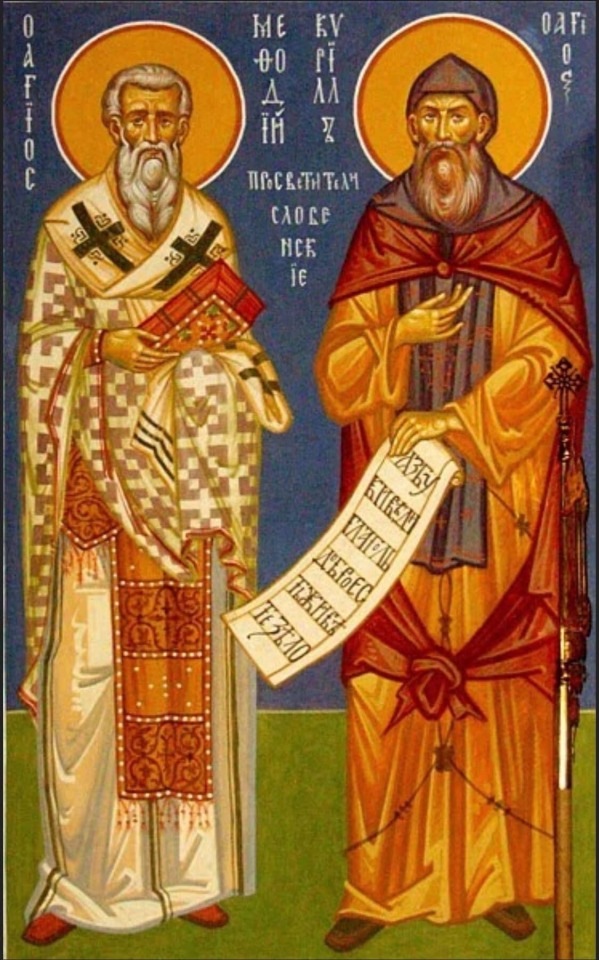
#father troy beecham#christianity#troy beecham episcopal#jesus#father troy beecham episcopal#saints#god#salvation
5 notes
·
View notes
Text
281J Early 15th century Homiliary
{Homiliarius doctorum qui omiliarius dici solet … Hieronymi Augustini, Ambrosii, Jo. Chrysostomi, Gregorii, Origenis, Bede et complures ..}?
St Augustine (354- 430), John Christomos (349-407) St Benedict , Pope Leo I(440-61) ( and others)
For this collection of Homilies, who was the editor is not certain, and while traditionally it is attributed to Paul the Deacon approximately 720-799 There is also supposition that it was collected by Alcuin or even Bede.
What we do know is that the production of
Homiliary began in the 780s when Charlemagne (742/743–814) appointed Paul the Deacon to compose a Homiliary. Charlemagne,” has been represented as the sponsor or even creator of medieval education, and the Carolingian renaissance has been represented as the renewal of Western culture. This renaissance, however, built on earlier episcopal and monastic developments, and, although Charlemagne did help to ensure the survival of scholarly traditions in a relatively bleak and rude age, there was nothing like the general advance in education that occurred
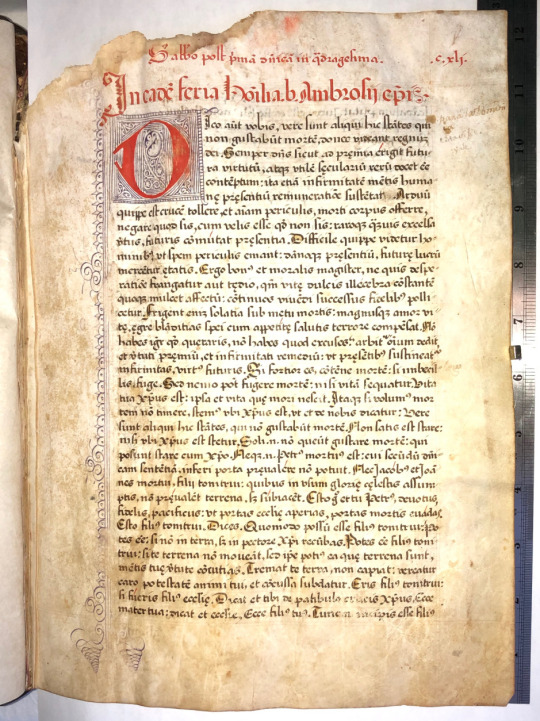
later with the cultural awakening of the 11th and 12th centuries. Learning, nonetheless, had no more ardent friend than Charlemagne, who came to the Frankish throne in 768 distressed to find extremely poor education systems” [EB] “Charlemagne stands out as the personification of everything that is unselfish and noble, a conqueror who visualized himself as the champion of European unity with the purpose of saving Europe through imperial conquest—an evangelist with a sword. As it turns out, Charlemagne did see himself as the Conqueror of everything pagan and heterodox and the divinely destined builder of Augustine’s City of God—of “one God, one emperor, one pope, one city of God.”[2] It was as if Charlemagne consciously sought to fulfill Plato’s vision of the ideal philosopher king. After all, Europe badly needed a conquering strong man like David of old, who could exercise wisdom and discernment in the sustainment of God’s new Jerusalem on earth.” [Gregory W. Hamilton ;http://nrla.com/charlemagne-and-the-vision-of-a-christian-empire/]N
So, We do know that ” From a very early time the Homilies of the Fathers were in high esteem, and were read in connection with the recitation of the Divine Office. That the custom was as old as the sixth century we know since St. Gregory the Great refers to it, and St. Benedict mentions it in his rule (Pierre Batiffol, History of the Roman Breviary, 107). This was particularly true of the homilies of Pope St. Leo I, very terse and peculiarly suited to liturgical purposesThis particular Homilarium Begins [folio cxli] with Ambrose (340-397) Homilies for the Quadragesima (forty days of Lent -Yes lent is longer than 40 days even though there are more 40 days from Ash Wednesday to Easter. ( counting the days of Lent excluding its Sundays and the Sacred Triduum, which technically is a separate sacred time.) This takes up to folio 224 (cclxxiiii). Following St Ambrose who has iv sermons in this section are sermons by Origen, Bede , John Chrystosom Cyrill , Augustine , Peter Chrysologus Archbishop of Ravenna , Alcuin of York .

After the Quadragesima series begins the Homilies for The Passion of Christ (Holy Week) On Palm Sunday, Jesus and his disciples spent the night in Bethany, a town about two miles east of Jerusalem. This is where Lazarus, whom Jesus had raised from the dead, and his two sisters, Mary and Martha lived. They were close friends of Jesus, and probably hosted Him and His disciples during their final days in Jerusalem.

This section (folios 141-245 )of Homilies begins at Quadragesima see above.
Then Holy Week/Passione homilies occupy folios 246-312.
Augustine of Hippo (13 November 354 – 28 August 430 AD) ,Gregory (3 September 590 to 12 March 604 AD) , Pope Leo (440-416 AD), Chrystomos (347–407)
Next in course is Palm Sunday “Dominica in ramis palmarum folios 313-337
Abbot Bernard (1090-1153), Pope Leo (440–461), Cyprian (200-258) , Chrystomos(347-407) Ambrose: (c339-397)
The final leaf is Easter Saturday (Sabbato sancto pasche)

Probably the first 140 leaves made up Homiletic commentaries on the Old Testament: the Hexaemeron (Six Days of Creation); De Helia et ieiunio (On Elijah and Fasting); De Iacob et vita beata (On Jacob and the Happy Life); De Abraham; De Cain et Abel; De Ioseph (Joseph); De Isaac vel anima (On Isaac, or The Soul); De Noe (Noah); De interpellatione Iob et David (On the Prayer of Job and David); De patriarchis (On the Patriarchs); De Tobia (Tobit); Explanatio psalmorum (Explanation of the Psalms); Explanatio symboli (Commentary on the Symbol).
Saint Augustine:

Peter Chrysologus:
(c. 380 – c. 450) Archbishop of Ravenna, approximately 400-450 , The earliest printed work by Chrysologus is 1575 Insigne et pervetvstvm opvs homiliarum.He is known as the “Doctor of Homilies” for the concise but theologically rich reflections he delivered during his time as the Bishop of Ravenna. His surviving works offer eloquent testimony to the Church’s traditional beliefs about Mary’s perpetual virginity, the penitential value of Lent, Christ’s Eucharistic presence, and the primacy of St. Peter and his successors in the Church. Few details of St. Peter Chrysologus’ biography are known. He was born in the Italian town of Imola in either the late fourth or early fifth century, but sources differ as to whether this occurred around 380 or as late as 406.
John Chrystosom

Beyond Chrstostoms preaching, the other lasting legacy of John is his influence on Christian liturgy. Two of his writings are particularly notable. He harmonized the liturgical life of the Church by revising the prayers and rubrics of the Divine Liturgy, or celebration of the Holy Eucharist. To this day, Eastern Orthodox and Eastern Catholic Churches of the Byzantine Rite typically celebrate the Divine Liturgy of Saint John Chrysostom as the normal Eucharistic liturgy, although his exact connection with it remains a matter of debate among experts.
Saint Cyrill.

Cyril’s jurisdiction over Jerusalem was expressly confirmed by the First Council of Constantinople (381), at which he was present. At that council he voted for acceptance of the term homoousios,(“consubstantial” this term was later also applied to the Holy Spirit in order to designate it as being “same in essence” with the Father and the Son. Those notions became cornerstones of theology in Nicene Christianity, and also represent one of the most important theological concepts within the Trinitarian doctrinal understanding of God) having been finally convinced that there was no better alternative. Cyril’s writings are filled with the loving and forgiving nature of God which was somewhat uncommon during his time period. Cyril fills his writings with great lines of the healing power of forgiveness and the Holy Spirit, like “The Spirit comes gently and makes himself known by his fragrance. He is not felt as a burden for God is light, very light. Rays of light and knowledge stream before him as the Spirit approaches. The Spirit comes with the tenderness of a true friend to save, to heal, to teach, to counsel, to strengthen and to console”. Cyril himself followed God’s message of forgiveness many times throughout his life. This is most clearly seen in his two major exiles where Cyril was disgraced and forced to leave his position and his people behind. He never wrote or showed any ill will towards those who wronged him. Cyril stressed the themes of healing and regeneration in his catechesis. the well-known Catechetical Lectures of St. Cyril of Jerusalem, to explain them to the catechumens during the latter part of Lent
Holy God, you gather the whole universe
into your radiant presence and continually reveal your Son as our Savior.
Bring healing to all wounds,
make whole all that is broken,
speak truth to all illusion,
and shed light in every darkness,
that all creation will see your glory and know your Christ. Amen.

St. Gregory the Great (ca. 540-604).

Alcuin of York : Flaccus Albinus Alcuinus; c. 735 – 19 May 804 AD)—also called Ealhwine, Alhwin or Alchoin—was an English scholar, clergyman, poet and teacher from York, Northumbria. He was born around 735 and became the student of Archbishop Ecgbert at York. At the invitation of Charlemagne, he was a leading scholar and teacher at the Carolingian court, where he remained a figure in the 780s and ’90s.

Alcuin wrote many theological and dogmatic treatises, as well as a few grammatical works and a number of poems. He was made Abbot of Tours in 796, where he remained until his death. “The most learned man anywhere to be found”, according to Einhard‘s Life of Charlemagne (ca. 817-833), he is considered among the most important architects of the Carolingian Renaissance. Among his pupils were many of the dominant intellectuals of the Carolingian era

Origen :Origen of Alexandria ( c. 184 – c. 253)

Origen, most modest of writers, hardly ever alludes to himself in his own works; but Eusebius has devoted to him almost the entire sixth book of “Ecclesiastical History”. Eusebius was thoroughly acquainted with the life of his hero; he had collected a hundred of his letters; in collaboration with the martyr Pamphilus he had composed the “Apology for Origen”; he dwelt at Caesarea where Origen’s library was preserved, and where his memory still lingered; if at times he may be thought somewhat partial, he is undoubtedly well informed. We find some details also in the “Farewell Address” of St. Gregory Thaumaturgus to his master, in the controversies of St. Jerome and Rufinus, in St. Epiphanius (Haeres., LXIV), and in Photius (Biblioth. Cod. 118).
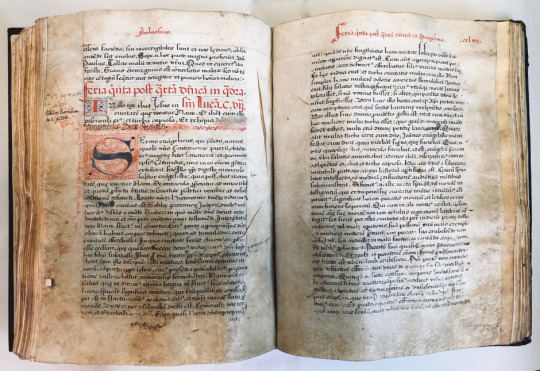
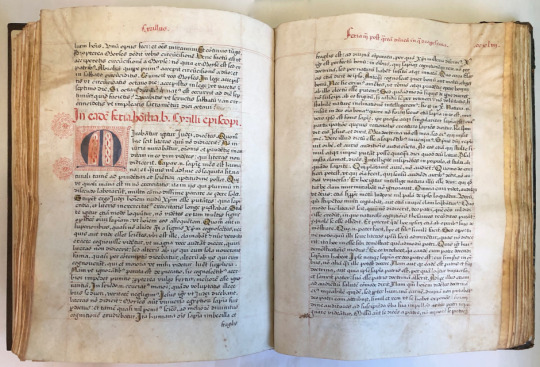


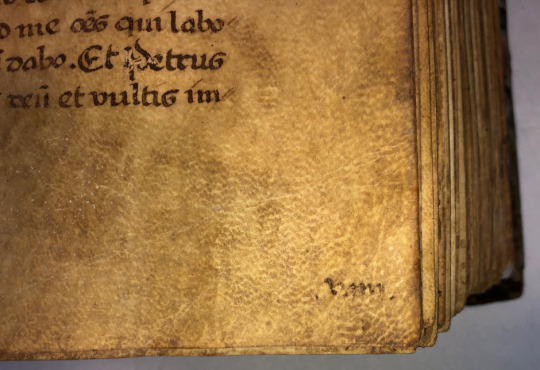
An early fifteenth century manuscript Homiliary 281J Early 15th century Homiliary {Homiliarius doctorum qui omiliarius dici solet ... Hieronymi Augustini, Ambrosii, Jo. Chrysostomi, Gregorii, Origenis, Bede et complures ..}?
#Alcuin#Charlemagne#early 15th century#Homilies#Medieval manuscript#medieval philosophy#St Ambrose#St Augustine#St Bernard#Venerable Bede
0 notes
Text
Events 10.7
3761 BC – The epoch reference date epoch (origin) of the modern Hebrew calendar.
1403 – Venetian–Genoese wars: The Genoese fleet under a French admiral is defeated by a Venetian fleet.
1477 – Uppsala University is inaugurated after receiving its corporate rights from Pope Sixtus IV in February the same year.
1513 – War of the League of Cambrai: Spain defeats Venice.
1571 – The Battle of Lepanto is fought, and the Ottoman Navy suffers its first defeat.
1691 – The charter for the Province of Massachusetts Bay is issued.
1763 – King George III issues the Royal Proclamation of 1763, closing Indigenous lands in North America north and west of the Alleghenies to white settlements.
1777 – American Revolutionary War: The Americans defeat the British in the Second Battle of Saratoga, also known as the Battle of Bemis Heights.
1780 – American Revolutionary War: American militia defeat royalist irregulars led by British major Patrick Ferguson in South Carolina.
1800 – French corsair Robert Surcouf, commander of the 18-gun ship La Confiance, captures the British 38-gun Kent.
1826 – The Granite Railway begins operations as the first chartered railway in the U.S.
1828 – Morea expedition: The city of Patras, Greece, is liberated by the French expeditionary force.
1840 – Willem II becomes King of the Netherlands.
1864 – American Civil War: A US Navy ship captures a Confederate raider in a Brazilian seaport.
1868 – Cornell University holds opening day ceremonies; initial student enrollment is 412, the highest at any American university to that date.
1870 – Franco-Prussian War: Léon Gambetta escapes the siege of Paris in a hot-air balloon.
1879 – Germany and Austria-Hungary sign the "Twofold Covenant" and create the Dual Alliance.
1912 – The Helsinki Stock Exchange sees its first transaction.
1916 – Georgia Tech defeats Cumberland University 222–0 in the most lopsided college football game in American history.
1919 – KLM, the flag carrier of the Netherlands, is founded. It is the oldest airline still operating under its original name.
1924 – Andreas Michalakopoulos becomes prime minister of Greece for a short period of time.
1929 – Photius II becomes Ecumenical Patriarch of Constantinople.
1933 – Air France is inaugurated, after being formed by a merger of five French airlines.
1940 – World War II: The McCollum memo proposes bringing the United States into the war in Europe by provoking the Japanese to attack the United States.
1944 – World War II: During an uprising at Birkenau concentration camp, Jewish prisoners burn down Crematorium IV.
1949 – The communist German Democratic Republic (East Germany) is formed.
1950 – Mother Teresa establishes the Missionaries of Charity.
1958 – The 1958 Pakistani coup d'état inaugurates a prolonged period of military rule.
1958 – The U.S. manned space-flight project is renamed Project Mercury.
1959 – The Soviet probe Luna 3 transmits the first-ever photographs of the far side of the Moon.
1963 – President Kennedy signs the ratification of the Partial Nuclear Test Ban Treaty.
1977 – The Fourth Soviet Constitution is adopted.
1985 – The Mameyes landslide kills almost 200 people in Puerto Rico.
1985 – Four men from the Palestine Liberation Front hijack the MS Achille Lauro off the coast of Egypt.
1987 – Sikh nationalists declare the independence of Khalistan from India; it is not internationally recognized.
1988 – A hunter discovers three gray whales trapped under the ice near Alaska; the situation becomes a multinational effort to free the whales.
1991 – Croatian War of Independence: Bombing of Banski dvori in Zagreb, Croatia.
1993 – The flood of '93 ends at St. Louis, Missouri, 103 days after it began, as the Mississippi River falls below flood stage.
1996 – Fox News Channel begins broadcasting.
1998 – Matthew Shepard, a gay student at the University of Wyoming, is found tied to a fence after being savagely beaten by two young adults in Laramie, Wyoming. He died five days later.
2000 – Israeli-Palestinian conflict: Hezbollah militants capture three Israeli Defense Force soldiers in a cross-border raid.
2001 – The U.S. invasion of Afghanistan begins with an air assault and covert operations on the ground.
2002 – The Space Shuttle Atlantis launches on STS-112 to continue assembly of the International Space Station.
2008 – Asteroid 2008 TC3 impacts the Earth over Sudan, the first time an asteroid impact is detected prior to its entry into earth's atmosphere.
2016 – In the wake of Hurricane Matthew, the death toll rises to 800.
0 notes
Text
PINARA Ancient Lycian City. Fethiye/Turkey. ROCK TOMBS

ROCK TOMBS:
Crag with rock-cut tombs towering over Pinara situated on a "round" mass of rock, believed to have given the ancient city its name.
I continue to the series of ancient cities.
A minor city with one of the best preserved temples in Anatolia.
”Historical monuments are the common heritage of mankind. It must be protected”
Pinara,
This article is about the ancient Lycian city. For other uses, see Pinara (disambiguation).
Pinara
τὰ Πίναρα (Greek)
The theatre of Pinara.
Location,Minare, Muğla Province, Turkey
Region
Lycia
Coordinates
36°29′19″N 29°15′07″E
Coordinates: 36°29′19″N 29°15′07″E
Type
Settlement
Pinara (Lycian: Pilleñni, presumably from the adjective "round"; Greek: τὰ Πίναρα, formerly Artymnesus or Artymnesos according to one account) was a large ancient city of Lycia at the foot of Mount Cragus (now Mount Babadağ), and not far from the western bank of the River Xanthos, homonymous with the ancient city of Xanthos (now Eşen Stream).
The remains of several ancient temples can be seen in Pinara, as well as rock tombs including one "royal tomb", an upper and a lower acropolis, a theatre, an odeon, an agora and a church. The name Pinara has somewhat been assimilated to the name of the present-day village of Minare, half an hour below the ruins and depending Fethiye district of Muğla Province, Turkey
The city, though not often mentioned by ancient writers, appears from its vast and beautiful ruins to have been, as Strabo asserts, one of Lycia’s largest, its chief port city until the harbor silted up to form the reed-filled wetlands of today.[2]
Yet another rare mention of the city in ancient sources is in connection with the help it provided, along with several other Lycian cities, to Pixodarus of Caria. Pinara was a member of the Lycian League, in which it held three votes. The city surrendered to Alexander the Great in 334 BCE. After Alexander’s death, the city fell to the kingdom of Pergamum. Pinara became a Roman city when Pergamum was willed by its last king Attalus III to the Roman Republic in 133 BCE. The city enjoyed prosperity during Roman rule, but was badly damaged by earthquakes in 141 and 240 CE. In the first occurrence, the city is recorded to have received a contribution from Opramoas for the repair of public buildings.[citation needed]
Pinara was Christianized early. Five bishops are known: Eustathius, who signed the formula of Acacius of Cæsarea at the Council of Seleucia in 359; Heliodorus, who signed the letter from the bishops of Lycia to the emperor Leo I the Thracian (458); Zenas, present at the Trullan Council (692); Theodore, at the Second Council of Nicaea (787); Athanasius, at the synod that reinstated Patriarch Photius I of Constantinople (the Photian Council) in 879. Pinara was the birthplace of Nicolas of Myra. Under repeated pressure from invading forces, the city lost its inhabitants in the ninth century.
There was a cult of Pandarus, the Lycian hero of the Trojan War, in Pinara, which led some sources to conclude that he was a native of the city.[1]
According to the Lycian history of Menecrates[disambiguation needed], quoted by Stephanus of Byzantium[2][3] the city was a colony of Xanthos, its original name would be Artymnesos. This name would have preceded the Lycian language name Pinara, derived from the form "Pilleñni" or "Pinale" meaning a "round hill" or simply "round",[2] based on a hypothesis of interchange of liquid consonants.[citation needed] The town is indeed situated on such a great round mass of rock and a more or less circular crag towers over the ruins. Another source, Panyassis, also mentions an eponymous founder by name Pinarus, son of Tremiles or Termilus, and this account is viewed by some sources as unsubstantial as the rest relating to the precedence of names.
Scientific discovery
Pinara’s ruins were identified by Sir Charles Fellows.[2] From amidst the ancient city, he says,[5] rises a singular round rocky cliff (the pinara of the Lycians), literally speckled all over with tombs. Beneath this cliff lie the ruins of the extensive and splendid city. The theater is in a very perfect state; all the seats are remaining, with the slanting sides towards the proscenium, as well as several of its doorways. The walls and several of the buildings are of the Cyclopean masonry, with massive gateways formed of three immense stones. The tombs are innumerable, and the inscriptions are in the Lycian characters, but Greek also occurs often on the same tombs. Some of these rock-tombs are adorned with fine and rich sculptures.
The Christian bishopric of Pinara, no longer a residential see, is included in the Catholic Church’ list of titular sees
en.wikipedia.org/wiki/Pinara#History
Posted by Feridun F. Alkaya on 2017-06-05 07:48:23
Tagged: , pinara , historical , Historic , History , Fethiye , muğla , ”Minareköyü” , Turkey , Türkiye , Archaeological , Archeology , Art history , ancient , Lycian , Pilleñni , Greek , Roman , xanthos , ”Charlesfellows” , Byzantine , ”ByzantineEmpires” , ”NGC” , ”Turkeyancientcity” , pınara , theatre , theater , Amphitheater , ”Rocktombs” , tombs
The post PINARA Ancient Lycian City. Fethiye/Turkey. ROCK TOMBS appeared first on Good Info.
0 notes
Text
“After his death, his wife Amytis, like her mother Amestris before her, was frequently intimate with men. When Amytis was suffering from a slight illness and not a serious one, the physician Apollonides of Cos, was called in to attend her. He fell in love with her [and] said that in order to recover her health she should entertain relations with men, because the illness was caused by the womb. But when his plan to have intercourse with her had worked out, the health of the woman began to fail and he began to flee the encounters. As she was dying, she implored her mother to requite Apollonides, and Amestris in turn informed the king: how Apollonides had had intercourse with Amytis, how he had fled the debased Amytis, and how her daughter had urged her to require Apollonides. The king left the mother to do as she pleased with the offender. She seized Apollonides and kept him in chains for two months while she tortured him and then buried him alive on the same day that Amytis died.”
Ctesias, fragment 14 §44, ~400 BCE
summary in Greek by Photius, Patriarch of Constantinople, 9th century CE
translation by Jan Stronk, 2010 CE
I need to write something out, because I can’t put it into my dissertation but I still need to express it.
this passage here is a good example of what frustrates me about my dissertation choices. it wasn’t enough for me to do a commonly-known author (Herodotus). oh no, I need to stand out from the crowd; let me work with Ctesias, whose works only survive in fragments gleaned from later authors! there’s a lot of reasons why I’m doing this, but here’s some of the issues.
the story above, of Amytis being coerced into sex by her doctor, has been through at least three lenses by the time you’re reading it:
1. the original events as they happened were told to Ctesias, who supposedly lived in Persia for a while (though he himself was a Greek physician from what is now the coast of Turkey)
2. Photius then summarized Ctesias’ work; this is the Greek text that I’m working with
3. Stronk in turn translated the summary into English.
so the passage above is Stronk’s interpretation of Photius’ interpretation of Ctesias’ interpretation of an event. I am in no way interested in trying to reconstruct real events, which would be impossible here. I’m more into trying to understand the way Ctesias represents certain events. however, sometimes it’s hard to tell what is Ctesias’ original idea and what is Photius’ skewed framing. for example, the first sentence:
After his death, his wife Amytis, like her mother Amestris before her, was frequently intimate with men.
This doesn’t really seem to have any bearing on the story that follows, though. maybe it’s a characterization of Amytis and/or Amestris? is it Ctesias reporting court gossip about previous monarchs (who were deceased by the time he lived there)? is it Photius, a Christian patriarch, adding in his own moralizing judgment? (I have suspicions that his church role has affected his transmission of the text elsewhere.) who is it really that is slut-shaming Amestris here? I’m ruling out Stronk, because I can also read Photius’ Greek, which already has the sentiment.
and of course, this is even further skewed by me being a 21st century “feminist” wanting to defend women from the men who tell their stories. I absolutely admit that that is a factor. but i’m also an academic who is interested in questions of why authors present their material in the way that they do. and there’s no narrative reason to include this sentence, unless the underlying message is that women who sleep around will be taken advantage of - which is obviously not a message that I support or endorse, no matter what century it is. and my own context makes me automatically suspicious of a Christian patriarch, mainly because I have seen SO MUCH judgment expressed by modern Orthodox Christians (whose tradition stems directly from that of Photius) that I find it hard to separate interests.
very broadly speaking, my dissertation focuses on why Ctesias and Herodotus present foreigners (mostly Persians) in the ways that they do. so it’s really outside of that scope to go on a “fuck men” tangent at this point. but the content of this passage is just giving me a lot of internal strife, when i really just need to focus on the fact that Amytis and Amestris worked together to make sure that Apollonides got fucking WRECKED for violating and betraying Amytis (because this chapter of my writing is about extreme violence).
#feminist in quotes because there's issues with the terminology that i'm not getting into here#anyway i'm so sorry for all of this#but as i said i can't really put this into the dissertation as is#but it's clouding my mind to keep it in#i'm just supposed to be talking about how persians in these texts use excessive violence to punish people for personal offenses and betrayal#long post#diss thoughts
0 notes
Text
Saints&Reading: Wednesday, June 27, 2023
june 27_june 15
SAINT JONAH, METROPOLITAN OF MOSCOW AND WONDERWORKER OF ALL RUSSIA (1461)

Saint Jonah, Metropolitan of Moscow and Wonderworker of All Russia was born in Galich into a pious Christian family. The father of the future saint was named Theodore. When he was only twelve, the youth received monastic tonsure in one of the Galich monasteries. From there, he transferred to the Moscow Simonov monastery, where he fulfilled various obediences for many years.
Once, Saint Photius, Metropolitan of Moscow (May 27 and July 2), visited the Simonov monastery. After the Molieben, he blessed the archimandrite and brethren and wished to bless those monks fulfilling their obediences in the sanctuary.
When he came to the bakery, he saw Saint Jonah sleeping, exhausted from work. The fingers of the saint’s right hand were positioned in a gesture of blessing. Saint Photius said not to wake him. He blessed the sleeping monk and predicted to those present that this monk would be a great hierarch of the Russian Church and would guide many on the way to salvation.
The prediction of Saint Photius was fulfilled. Several years later, Saint Jonah was made Bishop of Ryazan and Murom.
Saint Photius died in 1431. Five years after his death, Saint Jonah was chosen Metropolitan of All Russia for his virtuous and holy life. The newly-elected Metropolitan journeyed to Constantinople to be confirmed as Metropolitan by Patriarch Joseph II (1416-1439). Shortly before this, the nefarious Isidore, a Bulgarian, had already been established as Metropolitan. Spending a short time at Kyiv and Moscow, Isidore journeyed to the Council of Florence (1438), where he embraced Catholicism.
A Council of Russian hierarchs and clergy deposed Metropolitan Isidore, and he was compelled to flee secretly to Rome (where he died in 1462). Saint Jonah was unanimously chosen Metropolitan of All Russia. He was consecrated by Russian hierarchs in Moscow, with the blessing of Patriarch Gregory III (1445-1450) of Constantinople. This was the first time that Russian bishops consecrated their own metropolitan. Saint Jonah became Metropolitan on December 15, 1448. With archpastoral zeal, he led his flock to virtue and piety, spreading the Orthodox Faith by word and deed. Despite his lofty position, he continued with his monastic struggles as before.
In 1451 the Tatars unexpectedly advanced on Moscow; they burned the surrounding area and prepared for an assault on the city. Metropolitan Jonah led a procession along the walls of the city, tearfully entreating God to save the city and the people. Seeing the dying monk Anthony of the Chudov monastery, who was noted for his virtuous life, Saint Jonah said, “My son and brother Anthony! Pray to the Merciful God and the All-Pure Mother of God for the deliverance of the city and for all Orthodox Christians.”
The humble Anthony replied, “Great hierarch! We give thanks to God and to His All-Pure Mother. She has heard your prayer and has prayed to Her Son. The city and all Orthodox Christians will be saved through your prayers. The enemy will soon take flight. The Lord has ordained that I alone will be killed by the enemy.” Just as the Elder said this, an enemy arrow struck him.
The prediction of Elder Anthony was made on July 2, on the Feast of the Placing of the Robe of the Most Holy Theotokos. Confusion broke out among the Tatars, who fled in fear and terror. In his courtyard, Saint Jonah built a church in honor of the Placing of the Robe of the Most Holy Theotokos to commemorate the deliverance of Moscow from the enemy.
Saint Jonah was reposed in 1461, and miraculous healings began at his grave.
In 1472 the incorrupt relics of Metropolitan Jonah were uncovered and placed in the Dormition Cathedral of the Kremlin (the Transfer of the Holy Relics is celebrated on May 27). A Council of the Russian Church in 1547 established the commemoration of Saint Jonah, Metropolitan of Moscow. 1596 Patriarch Job added Saint Jonah to the Synaxis of the Moscow Hierarchs (October 5).
Saint Jonah, Metropolitan of Moscow, is also commemorated on March 31.
SAINT MICHAEL, FIRST METROPOLITAN OF KYIV AND ALL RUS' (992)

Saint Michael, the first Metropolitan of Kyiv, according to the Joakimov chronicle, was a Syrian by birth, but according to other catalogs, he was a Bulgarian or Serb. In 989, he arrived at Korsun with another clergy for holy Prince Vladimir (July 15), shortly after Vladimir’s Baptism (988).
As the first metropolitan of the Russian Church, his service was complex but grace-filled. He zealously made the rounds of the newly-enlightened Russian Land, preaching the Holy Gospel, baptizing and teaching the newly-illumined people, and founding the first churches and religious schools.
In Rostov, he established the first wooden church in honor of the Dormition of the Most Holy Theotokos and installed Theodore the Greek there as bishop. Saint Michael was a wise and gentle but also strict hierarch. The Russian Church has preserved the memory of the saint’s praiseworthy deeds. In the Synodikon of the Novgorod and Kyiv Sophia cathedrals, he is rightfully called the initiator.
Saint Michael died in 992 and was buried in Kyiv's Desyatin-Tithe church of the Most Holy Theotokos. In 1103, under the Igumen Saint Theoctistus (afterward Bishop of Chernihiv, August 5), his relics were transferred to the Antoniev Cave, and on October 1, 1730, into the Great Church of the Caves. Thus his memory was celebrated on September 30 and July 15, the day of his repose.
Formerly, his memory was celebrated on September 2, along with Saints Anthony and Theodosius of the Caves. There is a trace of this earlier celebration in the service to Saint Michael. In the second verse of the “Praises,” we sing: “Having begun the new year, we offer you our first songs, O blessed one, for you were the beginning of the hierarchy in the Russian land.”
Source: Orthodox Church in America_OCA
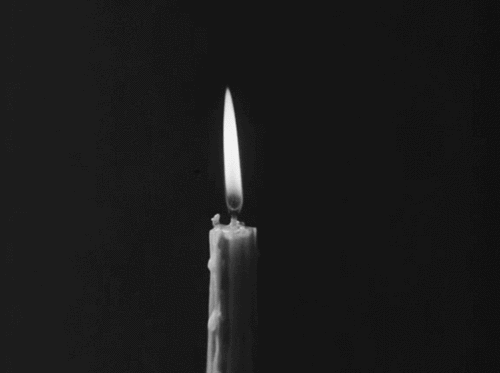
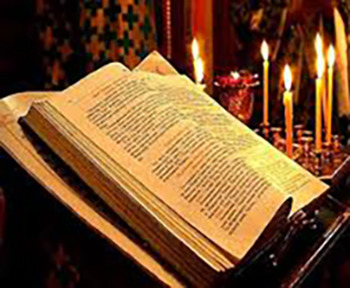
ROMANS 11:2-12
2 God has not cast away His people whom He foreknew. Or do you not know what the Scripture says of Elijah, how he pleads with God against Israel, saying, 3 LORD, they have killed Your prophets and torn down Your altars, and I alone am left, and they seek my life? 4 But what does the divine response say to him? "I have reserved seven thousand men who have not bowed the knee to Baal." 5 Even so then, at this present time, there is a remnant according to the election of grace. 6 And if by grace, then it is no longer of works; otherwise, grace is no longer grace. But if it is of works, it is no longer grace; otherwise, work is no longer work.7 What, then? Israel has not obtained what it seeks, but the elect have received it, and the rest were blinded. 8 Just as it is written: "God has given them a spirit of stupor, Eyes that they should not see And ears that they should not hear, To this very day." 9 And David says: "Let their table become a snare and a trap, A stumbling block and a recompense to them. 10 Let their eyes be darkened, so that they do not see, And bow down their back always." 11 I say then, have they stumbled that they should fall? Certainly not! But through their fall, salvation has come to the Gentiles to provoke them to jealousy. 12 Now if their fall is riches for the world, and their failure riches for the Gentiles, how much more their fullness!
JOHN 10:9-16
9 I am the door. If anyone enters by Me, he will be saved and will go in and out and find pasture. 10 The thief does not come except to steal, kill, and destroy. I have come that they may have life and have it more abundantly. 11 I am the good shepherd. The good shepherd gives His life for the sheep. 12 But a hireling, he who is not the shepherd, one who does not own the sheep, sees the wolf coming and leaves the sheep and flees; and the wolf catches the sheep and scatters them. 13 The hireling flees because he is a hireling and does not care about the sheep. 14 I am the good shepherd, and I know My sheep and am known by My own. 15 As the Father knows Me, even so, I know the Father and lay down My life for the sheep. 16 And other sheep I have which are not of this fold; also I must bring, and they will hear My voice; and there will be one flock and one shepherd.
#orthodoxy#orthodoxchristianity#easternorthodoxchurch#originofchristianity#spirituality#holyscriptures#gospel#bible
7 notes
·
View notes
Text
Saints&Reading: Fri., July 15, 2022
July 15_July 2
THE PLACEMENT OF THE VENERABLE ROBE OF THE MOST HOLY MOTHER OF GOD AT BLAKHERNAE (5th c.)
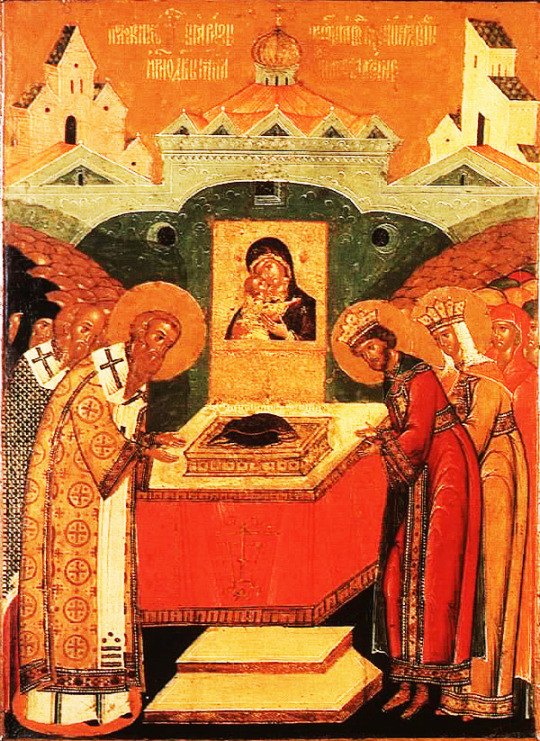
The Placing of the Venerable Robe of the Most Holy Theotokos at Blachernae: During the reign of the Byzantine Emperor Leo the Great (457-474), the brothers Galbius and Candidus, associates of the emperor, set out from Constantinople to Palestine to venerate the holy places. In a small settlement near Nazareth they stayed in the home of a certain old Jewish woman. In her house they noticed a room where many lamps were lit, incense burned, and sick people were gathered. When they asked her what the room contained, the pious woman did not want to give an answer for a long time. After persistent requests, she said that she had a very precious sacred item: the Robe of the Mother of God, which performed many miracles and healings. Before Her Dormition the Most Holy Virgin bequeathed one of her garments to a pious Jewish maiden, an ancestor of the old woman, instructing her to leave it to another virgin after her death. Thus, the Robe of the Mother of God was preserved in this family from generation to generation.
The jewelled chest, containing the sacred Robe, was transferred to Constantinople. Saint Gennadius, Patriarch of Constantinople (August 31), and the emperor Leo, having learned of the sacred treasure, were convinced of the incorrupt state of the holy Robe, and they certified its authenticity. At Blachernae, near the seacoast, a new church in honor of the Mother of God was constructed. On June 2, 458 Saint Gennadius transferred the sacred Robe into the Blachernae church with appropriate solemnity, placing it within a new reliquary.
Afterwards, the maphorion (i.e., the outer robe) of the Mother of God, and part of Her belt were also put into the reliquary with Her Robe. This circumstance also influenced the Orthodox iconography of the Feast, in connecting the two events: the Placing of the Robe, and the Placing of the Belt of the Mother of God in Blachernae. The Russian pilgrim Stephen of Novgorod, visiting Constantinople in about the year 1350, testifies: “We arrived at Blachernae, where the Robe lies upon an altar in a sealed reliquary.”
More than once, during the invasion of enemies, the Most Holy Theotokos saved the city to which She had given Her holy Robe. Thus it happened during the time of a siege of Constantinople by the Avars in 626, by the Persians in 677, and by the Arabs in the year 717. Especially relevant for us are events of the year 860, intimately connected with the history of the Russian Church.
On June 18, 860 the Russian fleet of Prince Askold, a force comprising more than 200 ships, laid waste the coastal regions of the Black Sea and the Bosphorus, then entered into the Golden Horn and threatened Constantinople. The Russian ships sailed within sight of the city, setting ashore troops who “proceeded before the city, stretching forth their swords.” The emperor Michael III (842-867), interrupted his campaign against the Arabs and returned to the capital. All night he prayed prostrated upon the stone tiles of the church of the Mother of God at Blachernae. The holy Patriarch Photius spoke to his flock, calling for tears of repentance to wash away sins, and to seek the intercession of the Most Holy Theotokos with fervent prayer.
The danger grew with each passing hour. “The city was barely able to stand against a spear,” says Patriarch Photius in another of his homilies. Under these conditions the decision was made to save the church’s sacred objects, especially the holy Robe of the Mother of God, which was kept in the Blachernae church, not far from the shore.
After serving an all-night Vigil, and taking it out from the Blachernae church, they carried the sacred Robe of the Mother of God in a procession around the city walls. They dipped its edge into the waters of the Bosphorus, and then they transported it to the center of Constantinople into the church of Hagia Sophia. The Mother of God protected the city and quelled the fury of the Russian warriors. An honorable truce was concluded, and Askold lifted the siege of Constantinople.
On June 25 the Russian army began to leave, taking with them a large tribute payment. A week afterwards, on July 2, the wonderworking Robe of the Mother of God was solemnly returned to its place in the reliquary of the Blachernae church. In remembrance of these events an annual feastday of the Placing of the Robe of the Mother of God was established on July 2 by holy Patriarch Photius.
Soon, in October-November of the year 860, a Russian delegation arrived in Constantinople to conclude a treaty “in love and peace.” Some of the conditions of the peace treaty included articles concerning the Baptism of Kievan Rus, the payment of an annual tribute by the Byzantines to the Russians, permission for them to serve with the Byzantine army, an agreement to trade in the territory of the Empire (primarily in Constantinople), and to send a diplomatic mission to Byzantium.
Most important was the point about the Baptism of Rus. The continuator of the Byzantine “Theophanes Chronicles” relates that “their delegation arrived in Constantinople with a request for them to receive holy Baptism, which also was fulfilled.” An Orthodox mission was sent to Kiev to fulfill this mutual wish of the Russians and the Greeks. Not very long before this (in 855) Saint Cyril the Philosopher (February 14 and May 11) had created a Slavonic alphabet and translated the Gospel. Saint Cyril was sent with his brother, Saint Methodius (April 6 and May 11), on a mission to Kiev with books translated into Slavonic. This was at the initiative of Saint Photius, whose student Saint Cyril was. The brothers spent the winter of 860/861 at Cherson, and in the spring of 861 they were at the River Dniepr, with Prince Askold.
Prince Askold was faced with a difficult choice, just as holy Prince Vladimir faced: both the Jews on the one hand, and the Moslems on the other, wanted him to accept their faith. But under the influence of Saint Cyril, the prince chose Orthodoxy. At the end of the year 861, Saints Cyril and Methodius returned to Constantinople and carried letters with them from Prince Askold to Emperor Michael III. Askold thanked the emperor for sending him “such men, who showed by both word and by example, that the Christian Faith is holy.” “Persuaded that this is the true Faith,” Askold further wrote, “we bid them to baptize in the hope that we may also attain sanctity. We are all friends of the Kingdom and prepared to be of service to you, as requested.”
Askold accepted holy Baptism with the name Nicholas, and many of his retinue were also baptized. Directly from Constantinople, the capital of Orthodoxy, through the efforts of the holy Apostles to the Slavs both the Slavonic divine services and the Slavonic written language arrived in Rus.
Saint Photius appointed Metropolitan Michael to Kiev, and the Russian metropolitan district was entered into the lists of dioceses of the Patriarchate of Constantinople. Patriarch Photius in an encyclical of the year 867 called the Baptism of the Bulgarians and the Russians as among the chief accomplishments of his archpastoral service. “The Russians, who lifted their hand against the Roman might,” he wrote, almost quoting literally from the missive of Askold, “have now replaced the impious teaching which they held to formerly, with the pure and genuine Christian Faith, and with love having established themselves in the array of our friends and subjects.” (The Byzantines counted as “subjects” all accepting Baptism from Constantinople and entering into military alliance with the Empire.) “The desire and zeal of faith has flared up within them to such an extent, that they have accepted bishops and pastors, and they embrace Christian sanctity with great zeal and fervor.”
The Feast of the Placing of the Robe of the Most Holy Theotokos in Blachernae also marks the canonical establishment of the Russian Orthodox metropolitanate in Kiev. By the blessing of the Mother of God and by the miracle from Her holy Robe not only was the deliverence of Constantinople from the most terrible siege in all its history accomplished, but also the liberation of the Russians from the darkness of pagan superstition to life eternal. Together with this, the year 860 brought recognition to Kievan Rus from Byzantium, and signified the emergence of the young Russian realm into the arena of history.
The attempt of Prince Askold to renew the Christian evangelization begun by the holy Apostle Andrew the First-Called, which he intended as a religious and state reform, ended unsuccessfully. The time for the spread of Christianity in the Russian Land had not yet come. The adherents of the old paganism were too strong, and the princely power was too weak. In the clash of Askold with the pagan Oleg in 882 the Kievans betrayed their prince. Askold, lured into the camp of his enemies for talks, received a martyr’s death at the hand of hired killers.
But the deed of Blessed Askold (the Ioakimov Chronicle calls him such) was not extinguished in the Russian Church. Oleg the Sage, who killed Askold, occupied the Kiev princedom after him, and called Kiev the “Mother of Russian Cities.”
The most ancient chronicles of Kiev preserved the grateful memory of the first Kievan Christian prince: the church of the Prophet of God Elias, built by Askold and later mentioned in Igor’s Treaty with the Greeks (in 944), is on the site where the present church of this name now stands, and there is also the church of Saint Nicholas the Wonderworker, built in the 950s by Saint Olga over Askold’s grave.
The most important achievement of Askold, entering forever into the Church inheritance not only of Rus, but of also all Orthodox Slavs, is the Slavonic Gospel and Slavonic services, translated by Saints Cyril and Methodius. Their apostolic activity among the Slavs began in Kiev at the court of Askold in 861, and continued afterwards in Moravia and Bulgaria. Following Blessed Askold, in the words of the ancient Alphabetic Prayers, “the Slavonic tribe now soars in flight, all striving toward Baptism.”
Several outstanding works of Byzantine Church hymnology and homiletics are connected with the miracle of the Robe of the Most Holy Theotokos at Blachernae. There are two homilies of Saint Photius, one of which he preached within days of the siege of Constantinople, and the other soon after the departure of the Russian forces. Also associated with the campaign of Askold against Constantinople is the composition of a remarkable “Akathist to the Most Holy Theotokos,” which certain Church histories ascribe also to holy Patriarch Photius. This Akathist forms an integral part of the services of Praise to the Most Holy Theotokos (i.e., the “Saturday of the Akathist,” Fifth Saturday of Great Lent).
It is not only Byzantine sources that relate the events of the year 860, but also Russian historical chronicles. Saint Nestor the Chronicler, stressing the significance of the Russian campaign against Constantinople, notes that from this time “it was begun to be called the Russian Land.” Certain of the chronicles, among them the Ioakimov and Nikonov, preserved accounts of the Baptism of Prince Askold and Kievan Rus after the campaign against Constantinople. The popular commemoration of this event is firmly associated with the names of the Kievan princes Askold and Dir, although in the opinion of historians, Dir was prince of Kiev somewhat earlier than Askold.
The veneration of the feast of the Placing of the Robe was long known in the Russian Church. Saint Andrew Bogoliubsky (July 4) built a church in honor of this feastday in the city of Vladimir at the Golden Gates. At the end of the fourteenth century, part of the Robe of the Mother of God was transferred from Constantinople to Rus by Saint Dionysius, Archbishop of Suzdal (June 26).
The holy Robe of the Mother of God, which previously saved Constantinople, later saved Moscow from hostilities. Tatars of the Horde of the princeling Mazovshi approached the walls of Moscow in the summer of 1451. Saint Jonah, Metropolitan of Moscow, with constant prayer and church services, encouraged the defenders of the capital. On the night of July 2, the Chronicle relates, great confusion occurred within the Tatar camp. The enemy abandoned their plundered goods and speedily departed in disarray. In memory of the miraculous deliverance of Moscow, Saint Jonah built the church of the Placing of the Robe in the Kremlin, making it his primary church. It burned, but in its place in the years 1484-1486 a new church, also dedicated to the Feast of the Placing of the Robe of the Mother of God, was built thirty years later. This temple, standing at present, continued to serve as the primary church of Russian metropolitans and patriarchs until the cathedral of the Twelve Apostles was built under Patriarch Nikon.
Source: Orthodox Church in America
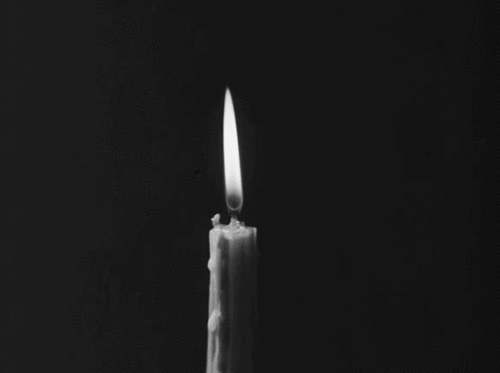
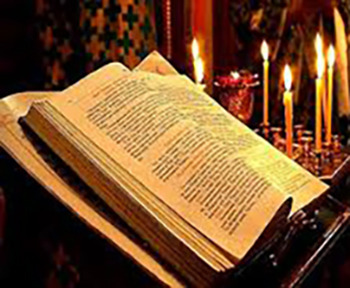
LUKE 10:38-42; 11:27-28
38 Now it happened as they went that He entered a certain village; and a certain woman named Martha welcomed Him into her house. 39 And she had a sister called Mary, who also sat at Jesus' feet and heard His word. 40 But Martha was distracted with much serving, and she approached Him and said, "Lord, do You not care that my sister has left me to serve alone? Therefore tell her to help me." 41 And Jesus answered and said to her, "Martha, Martha, you are worried and troubled about many things. 42 But one thing is needed, and Mary has chosen that good part, which will not be taken away from her.
27 And it happened, as He spoke these things, that a certain woman from the crowd raised her voice and said to Him, "Blessed is the womb that bore You, and the breasts which nursed You!" 28 But He said, "More than that, blessed are those who hear the word of God and keep it!"
HEBREWS 9:1-7
1Then indeed, even the first covenant had ordinances of divine service and the earthly sanctuary. 2 For a tabernacle was prepared: the first part, in which was the lampstand, the table, and the showbread, which is called the sanctuary; 3 and behind the second veil, the part of the tabernacle which is called the Holiest of All, 4 which had the golden censer and the ark of the covenant overlaid on all sides with gold, in which were the golden pot that had the manna, Aaron's rod that budded, and the tablets of the covenant; 5 and above it were the cherubim of glory overshadowing the mercy seat. Of these things we cannot now speak in detail. 6 Now when these things had been thus prepared, the priests always went into the first part of the tabernacle, performing the services. 7 But into the second part the high priest went alone once a year, not without blood, which he offered for himself and for the people's sins committed in ignorance;
#orthodoxy#orthodoxchristianity#easternchristianity#originofchriatianity#spirituality#holyscriptures#gospel#bible#wisdom
2 notes
·
View notes
Text
Saints&Reading: Mon, June, 28, 2021
June28 (old cal.) / June 15 ( new cal.)
THE HOLY PROPHET AMOS ( 8th c. B.C.)
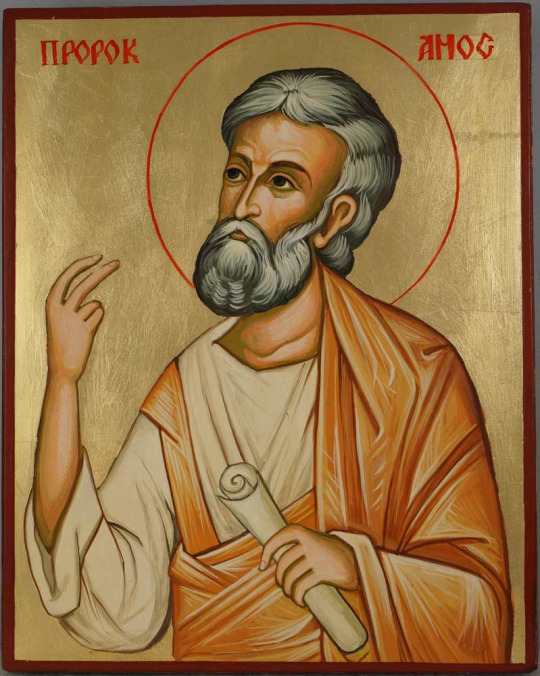
The Holy Prophet Amos, the third of the Twelve Minor Prophets,1 lived during the eighth century before Christ. He was from Judah, and was born at Tekoah in the land of Zebulon, six miles south of Bethlehem.
At that time, the Hebrew nation was divided into two Kingdoms: Judah in the south, and Israel in the north. King Uzziah ruled in Jerusalem, but the other ten tribes of Israel were ruled by Jeroboam II, who was an idolator. At Bethel he set up an idol in the shape of a golden calf, which the people worshipped, turning away from the true God.
Simple and uneducated, yet fervent in his faith and zealous for the glory of God, this former shepherd of sheep and goats, and dresser of sycamore trees (Amos 7:14-15) was chosen by the Lord for prophetic service. He was sent to the Kingdom of Israel to denounce King Jeroboam's impiety, as well as that of the Israelites. The Prophet predicted great misfortunes which would befall Israel because of its ungodliness. As a result of his denunciations, Amos repeatedly endured beatings and torture.
Amaziah, the chief priest of the royal sanctuary at Bethel, hated Amos, who predicted that the Gentiles would conquer Israel; that they will slay the King, as well as Amaziah's children; that Amaziah's wife would become a harlot; and that Amaziah himself would die in a pagan land, because he led the people into adultery with idols (7:17). Amaziah became furious and had Amos beaten, but all of these prophecies were fulfilled.
According to a later tradition, Uzziah, the son of Amaziah, struck the Prophet Amos with a club, seriously wounding him. He was taken to his native village of Tekoah in Judah, and died there after two days (circa 787 B.C.) He should not be confused with Amoz, the father of the Prophet Isaiah.
In iconography Amos is depicted as an old man with a pointed beard. His scroll reads: It is he who builds his ascent up to Heaven (Amos 9:6).
1 The terms major and minor Prophets refer to the length of their books, not to their individual prominence. Although Amos is ranked third, his prophecy was the first to be recorded.
SAINT JONAH, METROPOLITAN OF MOSCOW AND WONDERWORKER OF ALL RUSSIA (1461)

Saint Jonah, Metropolitan of Moscow and Wonderworker of All Russia, was born in the city of Galich into a pious Christian family. The father of the future saint was named Theodore. The youth received monastic tonsure in one of the Galich monasteries when he was only twelve years old. From there, he transferred to the Moscow Simonov monastery, where he fulfilled various obediences for many years.
Once, Saint Photius, Metropolitan of Moscow (May 27 and July 2), visited the Simonov monastery. After the Molieben, he blessed the archimandrite and brethren, and also wished to bless those monks who were fulfilling their obediences in the monastery.
When he came to the bakery, he saw Saint Jonah sleeping, exhausted from his work. The fingers of the saint’s right hand were positioned in a gesture of blessing. Saint Photius said not to wake him. He blessed the sleeping monk and predicted to those present that this monk would be a great hierarch of the Russian Church, and would guide many on the way to salvation.
The prediction of Saint Photius was fulfilled. Several years later, Saint Jonah was made Bishop of Ryazan and Murom.
Saint Photius died in 1431. Five years after his death, Saint Jonah was chosen Metropolitan of All Russia for his virtuous and holy life. The newly-elected Metropolitan journeyed to Constantinople in order to be confirmed as Metropolitan by Patriarch Joseph II (1416-1439). Shortly before this the nefarious Isidore, a Bulgarian, had already been established as Metropolitan. Spending a short time at Kiev and Moscow, Isidore journeyed to the Council of Florence (1438), where he embraced Catholicism.
A Council of Russian hierarchs and clergy deposed Metropolitan Isidore, and he was compelled to flee secretly to Rome (where he died in 1462). Saint Jonah was unanimously chosen Metropolitan of All Russia. He was consecrated by Russian hierarchs in Moscow, with the blessing of Patriarch Gregory III (1445-1450) of Constantinople. This was the first time that Russian bishops consecrated their own Metropolitan. Saint Jonah became Metropolitan on December 15, 1448. With archpastoral zeal he led his flock to virtue and piety, spreading the Orthodox Faith by word and by deed. Despite his lofty position, he continued with his monastic struggles as before.
In 1451 the Tatars unexpectedly advanced on Moscow; they burned the surrounding area and prepared for an assault on the city. Metropolitan Jonah led a procession along the walls of the city, tearfully entreating God to save the city and the people. Seeing the dying monk Anthony of the Chudov monastery, who was noted for his virtuous life, Saint Jonah said, “My son and brother Anthony! Pray to the Merciful God and the All-Pure Mother of God for the deliverance of the city and for all Orthodox Christians.”
The humble Anthony replied, “Great hierarch! We give thanks to God and to His All-Pure Mother. She has heard your prayer and has prayed to Her Son. The city and all Orthodox Christians will be saved through your prayers. The enemy will soon take flight. The Lord has ordained that I alone am to be killed by the enemy.” Just as the Elder said this, an enemy arrow struck him.
The prediction of Elder Anthony was made on July 2, on the Feast of the Placing of the Robe of the Most Holy Theotokos. Confusion broke out among the Tatars, and they fled in fear and terror. In his courtyard, Saint Jonah built a church in honor of the Placing of the Robe of the Most Holy Theotokos, to commemorate the deliverance of Moscow from the enemy.
Saint Jonah reposed in the year 1461, and miraculous healings began to take place at his grave.
In 1472 the incorrupt relics of Metropolitan Jonah were uncovered and placed in the Dormition Cathedral of the Kremlin (the Transfer of the holy Relics is celebrated May 27). A Council of the Russian Church in 1547 established the commemoration of Saint Jonah, Metropolitan of Moscow. In 1596, Patriarch Job added Saint Jonah to the Synaxis of the Moscow Hierarchs (October 5).
Saint Jonah, Metropolitan of Moscow is also commemorated on March 31.
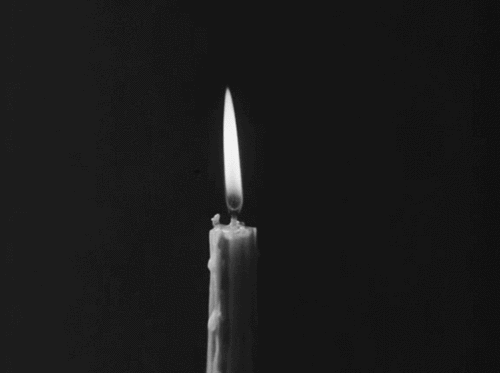

MATTHEW 6:31-34; 7:9-11
31Therefore do not worry, saying, 'What shall we eat?' or 'What shall we drink?' or 'What shall we wear?'32 For after all these things the Gentiles seek. For your heavenly Father knows that you need all these things. 33 But seek first the kingdom of God and His righteousness, and all these things shall be added to you. 34 Therefore do not worry about tomorrow, for tomorrow will worry about its own things. Sufficient for the day is its own trouble. 9 Or what man is there among you who, if his son asks for bread, will give him a stone? 10 Or if he asks for a fish, will he give him a serpent? 11 If you then, being evil, know how to give good gifts to your children, how much more will your Father who is in heaven give good things to those who ask Him!
HEBREWS 13:17-21
17 Obey those who rule over you, and be submissive, for they watch out for your souls, as those who must give account. Let them do so with joy and not with grief, for that would be unprofitable for you. 18 Pray for us; for we are confident that we have a good conscience, in all things desiring to live honorably. 19 But I especially urge you to do this, that I may be restored to you the sooner. 20 Now may the God of peace who brought up our Lord Jesus from the dead, that great Shepherd of the sheep, through the blood of the everlasting covenant, 21 make you complete in every good work to do His will, working in you what is well pleasing in His sight, through Jesus Christ, to whom be glory forever and ever. Amen.
4 notes
·
View notes
Text
July 15 ( old cal.)_ July 2 (new cal.)
THE PLACEMENT OF THE VENERABLE ROBE OF THE MOSTHOLY MOTHER OF GOD AT BLAKHERNAE (5th c.)

The Placing of the Venerable Robe of the Most Holy Theotokos at Blachernae: During the reign of the Byzantine Emperor Leo the Great (457-474), the brothers Galbius and Candidus, associates of the emperor, set out from Constantinople to Palestine to venerate the holy places. In a small settlement near Nazareth they stayed in the home of a certain old Jewish woman. In her house they noticed a room where many lamps were lit, incense burned, and sick people were gathered. When they asked her what the room contained, the pious woman did not want to give an answer for a long time. After persistent requests, she said that she had a very precious sacred item: the Robe of the Mother of God, which performed many miracles and healings. Before Her Dormition the Most Holy Virgin bequeathed one of her garments to a pious Jewish maiden, an ancestor of the old woman, instructing her to leave it to another virgin after her death. Thus, the Robe of the Mother of God was preserved in this family from generation to generation.
The jewelled chest, containing the sacred Robe, was transferred to Constantinople. Saint Gennadius, Patriarch of Constantinople (August 31), and the emperor Leo, having learned of the sacred treasure, were convinced of the incorrupt state of the holy Robe, and they certified its authenticity. At Blachernae, near the seacoast, a new church in honor of the Mother of God was constructed. On June 2, 458 Saint Gennadius transferred the sacred Robe into the Blachernae church with appropriate solemnity, placing it within a new reliquary.
Afterwards, the maphorion (i.e., the outer robe) of the Mother of God, and part of Her belt were also put into the reliquary with Her Robe. This circumstance also influenced the Orthodox iconography of the Feast, in connecting the two events: the Placing of the Robe, and the Placing of the Belt of the Mother of God in Blachernae. The Russian pilgrim Stephen of Novgorod, visiting Constantinople in about the year 1350, testifies: “We arrived at Blachernae, where the Robe lies upon an altar in a sealed reliquary.”
More than once, during the invasion of enemies, the Most Holy Theotokos saved the city to which She had given Her holy Robe. Thus it happened during the time of a siege of Constantinople by the Avars in 626, by the Persians in 677, and by the Arabs in the year 717. Especially relevant for us are events of the year 860, intimately connected with the history of the Russian Church.
On June 18, 860 the Russian fleet of Prince Askold, a force comprising more than 200 ships, laid waste the coastal regions of the Black Sea and the Bosphorus, then entered into the Golden Horn and threatened Constantinople. The Russian ships sailed within sight of the city, setting ashore troops who “proceeded before the city, stretching forth their swords.” The emperor Michael III (842-867), interrupted his campaign against the Arabs and returned to the capital. All night he prayed prostrated upon the stone tiles of the church of the Mother of God at Blachernae. The holy Patriarch Photius spoke to his flock, calling for tears of repentance to wash away sins, and to seek the intercession of the Most Holy Theotokos with fervent prayer.
The danger grew with each passing hour. “The city was barely able to stand against a spear,” says Patriarch Photius in another of his homilies. Under these conditions the decision was made to save the church’s sacred objects, especially the holy Robe of the Mother of God, which was kept in the Blachernae church, not far from the shore.
After serving an all-night Vigil, and taking it out from the Blachernae church, they carried the sacred Robe of the Mother of God in a procession around the city walls. They dipped its edge into the waters of the Bosphorus, and then they transported it to the center of Constantinople into the church of Hagia Sophia. The Mother of God protected the city and quelled the fury of the Russian warriors. An honorable truce was concluded, and Askold lifted the siege of Constantinople.
On June 25 the Russian army began to leave, taking with them a large tribute payment. A week afterwards, on July 2, the wonderworking Robe of the Mother of God was solemnly returned to its place in the reliquary of the Blachernae church. In remembrance of these events an annual feastday of the Placing of the Robe of the Mother of God was established on July 2 by holy Patriarch Photius.
Soon, in October-November of the year 860, a Russian delegation arrived in Constantinople to conclude a treaty “in love and peace.” Some of the conditions of the peace treaty included articles concerning the Baptism of Kievan Rus, the payment of an annual tribute by the Byzantines to the Russians, permission for them to serve with the Byzantine army, an agreement to trade in the territory of the Empire (primarily in Constantinople), and to send a diplomatic mission to Byzantium.
Most important was the point about the Baptism of Rus. The continuator of the Byzantine “Theophanes Chronicles” relates that “their delegation arrived in Constantinople with a request for them to receive holy Baptism, which also was fulfilled.” An Orthodox mission was sent to Kiev to fulfill this mutual wish of the Russians and the Greeks. Not very long before this (in 855) Saint Cyril the Philosopher (February 14 and May 11) had created a Slavonic alphabet and translated the Gospel. Saint Cyril was sent with his brother, Saint Methodius (April 6 and May 11), on a mission to Kiev with books translated into Slavonic. This was at the initiative of Saint Photius, whose student Saint Cyril was. The brothers spent the winter of 860/861 at Cherson, and in the spring of 861 they were at the River Dniepr, with Prince Askold.
Prince Askold was faced with a difficult choice, just as holy Prince Vladimir faced: both the Jews on the one hand, and the Moslems on the other, wanted him to accept their faith. But under the influence of Saint Cyril, the prince chose Orthodoxy. At the end of the year 861, Saints Cyril and Methodius returned to Constantinople and carried letters with them from Prince Askold to Emperor Michael III. Askold thanked the emperor for sending him “such men, who showed by both word and by example, that the Christian Faith is holy.” “Persuaded that this is the true Faith,” Askold further wrote, “we bid them to baptize in the hope that we may also attain sanctity. We are all friends of the Kingdom and prepared to be of service to you, as requested.”
Askold accepted holy Baptism with the name Nicholas, and many of his retinue were also baptized. Directly from Constantinople, the capital of Orthodoxy, through the efforts of the holy Apostles to the Slavs both the Slavonic divine services and the Slavonic written language arrived in Rus.
Saint Photius appointed Metropolitan Michael to Kiev, and the Russian metropolitan district was entered into the lists of dioceses of the Patriarchate of Constantinople. Patriarch Photius in an encyclical of the year 867 called the Baptism of the Bulgarians and the Russians as among the chief accomplishments of his archpastoral service. “The Russians, who lifted their hand against the Roman might,” he wrote, almost quoting literally from the missive of Askold, “have now replaced the impious teaching which they held to formerly, with the pure and genuine Christian Faith, and with love having established themselves in the array of our friends and subjects.” (The Byzantines counted as “subjects” all accepting Baptism from Constantinople and entering into military alliance with the Empire.) “The desire and zeal of faith has flared up within them to such an extent, that they have accepted bishops and pastors, and they embrace Christian sanctity with great zeal and fervor.”
The Feast of the Placing of the Robe of the Most Holy Theotokos in Blachernae also marks the canonical establishment of the Russian Orthodox metropolitanate in Kiev. By the blessing of the Mother of God and by the miracle from Her holy Robe not only was the deliverence of Constantinople from the most terrible siege in all its history accomplished, but also the liberation of the Russians from the darkness of pagan superstition to life eternal. Together with this, the year 860 brought recognition to Kievan Rus from Byzantium, and signified the emergence of the young Russian realm into the arena of history.
The attempt of Prince Askold to renew the Christian evangelization begun by the holy Apostle Andrew the First-Called, which he intended as a religious and state reform, ended unsuccessfully. The time for the spread of Christianity in the Russian Land had not yet come. The adherents of the old paganism were too strong, and the princely power was too weak. In the clash of Askold with the pagan Oleg in 882 the Kievans betrayed their prince. Askold, lured into the camp of his enemies for talks, received a martyr’s death at the hand of hired killers.
But the deed of Blessed Askold (the Ioakimov Chronicle calls him such) was not extinguished in the Russian Church. Oleg the Sage, who killed Askold, occupied the Kiev princedom after him, and called Kiev the “Mother of Russian Cities.”
The most ancient chronicles of Kiev preserved the grateful memory of the first Kievan Christian prince: the church of the Prophet of God Elias, built by Askold and later mentioned in Igor’s Treaty with the Greeks (in 944), is on the site where the present church of this name now stands, and there is also the church of Saint Nicholas the Wonderworker, built in the 950s by Saint Olga over Askold’s grave.
The most important achievement of Askold, entering forever into the Church inheritance not only of Rus, but of also all Orthodox Slavs, is the Slavonic Gospel and Slavonic services, translated by Saints Cyril and Methodius. Their apostolic activity among the Slavs began in Kiev at the court of Askold in 861, and continued afterwards in Moravia and Bulgaria. Following Blessed Askold, in the words of the ancient Alphabetic Prayers, “the Slavonic tribe now soars in flight, all striving toward Baptism.”
Several outstanding works of Byzantine Church hymnology and homiletics are connected with the miracle of the Robe of the Most Holy Theotokos at Blachernae. There are two homilies of Saint Photius, one of which he preached within days of the siege of Constantinople, and the other soon after the departure of the Russian forces. Also associated with the campaign of Askold against Constantinople is the composition of a remarkable “Akathist to the Most Holy Theotokos,” which certain Church histories ascribe also to holy Patriarch Photius. This Akathist forms an integral part of the services of Praise to the Most Holy Theotokos (i.e., the “Saturday of the Akathist,” Fifth Saturday of Great Lent).
It is not only Byzantine sources that relate the events of the year 860, but also Russian historical chronicles. Saint Nestor the Chronicler, stressing the significance of the Russian campaign against Constantinople, notes that from this time “it was begun to be called the Russian Land.” Certain of the chronicles, among them the Ioakimov and Nikonov, preserved accounts of the Baptism of Prince Askold and Kievan Rus after the campaign against Constantinople. The popular commemoration of this event is firmly associated with the names of the Kievan princes Askold and Dir, although in the opinion of historians, Dir was prince of Kiev somewhat earlier than Askold.
The veneration of the feast of the Placing of the Robe was long known in the Russian Church. Saint Andrew Bogoliubsky (July 4) built a church in honor of this feastday in the city of Vladimir at the Golden Gates. At the end of the fourteenth century, part of the Robe of the Mother of God was transferred from Constantinople to Rus by Saint Dionysius, Archbishop of Suzdal (June 26).
The holy Robe of the Mother of God, which previously saved Constantinople, later saved Moscow from hostilities. Tatars of the Horde of the princeling Mazovshi approached the walls of Moscow in the summer of 1451. Saint Jonah, Metropolitan of Moscow, with constant prayer and church services, encouraged the defenders of the capital. On the night of July 2, the Chronicle relates, great confusion occurred within the Tatar camp. The enemy abandoned their plundered goods and speedily departed in disarray. In memory of the miraculous deliverance of Moscow, Saint Jonah built the church of the Placing of the Robe in the Kremlin, making it his primary church. It burned, but in its place in the years 1484-1486 a new church, also dedicated to the Feast of the Placing of the Robe of the Mother of God, was built thirty years later. This temple, standing at present, continued to serve as the primary church of Russian metropolitans and patriarchs until the cathedral of the Twelve Apostles was built under Patriarch Nikon.
St Juvenal, First Patriarche of Jerusalem (458)

Saint Juvenal, Patriarch of Jerusalem, occupied the throne of the Holy City during the years 420-458. During this period great luminaries of the Church enlightened the world: Saints Euthymius the Great (January 20), Simeon the Stylite (September 1), Gerasimus of Jordan (March 4), and many others.
Saint Juvenal was a friend and converser with Saint Euthymius the Great. During Saint Juvenal’s archpastoral service, the Eastern Church was troubled by dangerous false teachings, which he opposed with a pastoral zeal, safeguarding the flock of Christ.
The Third Ecumenical Council was convened in the city of Ephesus in 431. It condemned the heresy of Nestorius, which was opposed to the Orthodox teaching of the divine nature of Jesus Christ. Saint Cyril of Alexandria (June 9) presided at this Council, and among his colleagues was Patriarch Juvenal.
In 451, the Fourth Ecumenical Council met in the city of Chalcedon. It condemned the Eutchian [Monophysite] heresy, which taught that the human nature in Christ was totally swallowed up and absorbed by the divine nature. The holy Fathers, among them Saint Juvenal, condemned the heresy of Eutychius and affirmed the Orthodox doctrine of the union of two natures in the Lord Jesus Christ, the divine and the human, without separation and without mixture. The heretics, however, continued to confuse the minds of Christians.
At the head of the heretics stood Theodosius, who lived at Jerusalem, and who had won over to his side Eudokia, the widow of the emperor Theodosius the Younger (+ 450), who lived at Jerusalem. He demanded that Patriarch Juvenal repudiate the Council of Chalcedon, that is, that he should renounce the Orthodox dogma of the two natures in Christ.
Saint Juvenal would not agree to embrace falsehood, and bravely confessed the Chalcedon doctrine before the heretics. Theodosius and his adherents then deposed Patriarch Juvenal from the patriarchal throne. The saint withdrew to Constantinople, to Patriarch Anatolius (July 3) and the emperor Marcian. The heretic Theodosius, under the patronage of Eudokia, occupied the patriarchal throne in Palestine, but only for twenty months. Emperor Marcian, holding Saint Juvenal in high esteem, placed him on the patriarchal throne once more, and so the holy confessor returned to Jerusalem.
The saint made many efforts to restore Church peace. At the suggestion of Saint Simeon the Stylite, the empress Eudokia repented before Saint Juvenal and returned to communion with the Orthodox. A large part of the Jerusalem flock, who had been led astray by the heretics, followed her. Having defeated the pernicious heresies, and having established oneness of mind and propriety, Patriarch Juvenal died peacefully among his faithful flock, after serving as a bishop for thirty-eight years.
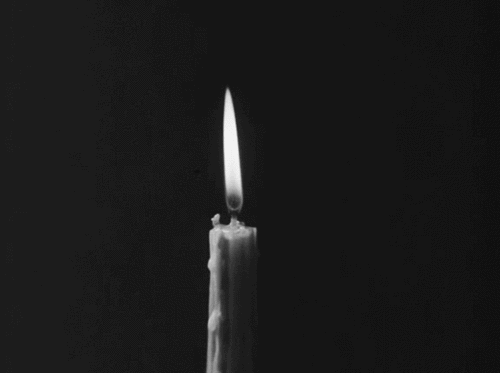
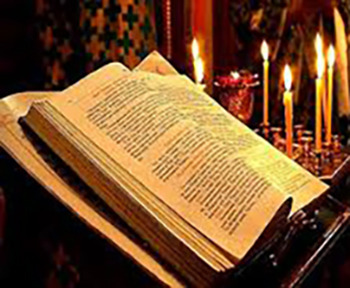
LUKE 10:38-42; 11:27-28
38 Now it happened as they went that He entered a certain village; and a certain woman named Martha welcomed Him into her house. 39 And she had a sister called Mary, who also sat at Jesus' feet and heard His word.40 But Martha was distracted with much serving, and she approached Him and said, "Lord, do You not care that my sister has left me to serve alone? Therefore tell her to help me." 41 And Jesus answered and said to her, "Martha, Martha, you are worried and troubled about many things. 42 But one thing is needed, and Mary has chosen that good part, which will not be taken away from her. 27 And it happened, as He spoke these things, that a certain woman from the crowd raised her voice and said to Him, "Blessed is the womb that bore You, and the breasts which nursed You!" 28 But He said, "More than that, blessed are those who hear the word of God and keep it!"
HEBREWS 9:1-7
1 Then indeed, even the first covenant had ordinances of divine service and the earthly sanctuary. 2 For a tabernacle was prepared: the first part, in which was the lampstand, the table, and the showbread, which is called the sanctuary; 3 and behind the second veil, the part of the tabernacle which is called the Holiest of All, 4 which had the golden censer and the ark of the covenant overlaid on all sides with gold, in which were the golden pot that had the manna, Aaron's rod that budded, and the tablets of the covenant; 5 and above it were the cherubim of glory overshadowing the mercy seat. Of these things we cannot now speak in detail. 6 Now when these things had been thus prepared, the priests always went into the first part of the tabernacle, performing the services. 7 But into the second part the high priest went alone once a year, not without blood, which he offered for himself and for the people's sins committed in ignorance;
1 note
·
View note
Text
Today, the Church remembers Sts. Cyril, Priest and Monk, and Methodius, Bishop, both Missionaries.
Orate pro nobis.
Saints Cyril and Methodius (AD 826–869, 815–885) were two brothers who were Byzantine Christian theologians and Christian missionaries. Through their work they influenced the cultural development of all Slavs, for which they received the title "Apostles to the Slavs".
They are credited with devising the Glagolitic alphabet, the first alphabet used to transcribe Old Church Slavonic. After their deaths, their pupils continued their missionary work among other Slavs. Both brothers are venerated in the Orthodox Church as saints with the title of "equal-to-apostles". In 1880, Pope Leo XIII introduced their feast into the calendar of the Roman Catholic Church. In 1980, Pope John Paul II declared them co-patron saints of Europe, together with Benedict of Nursia.
The two brothers were born in Thessalonica (located in present-day Greece) – Cyril in about AD 827–828 and Methodius about 815–820. Cyril was reputedly the youngest of seven brothers; he was born Constantine, but was given the name Cyril upon becoming a monk in Rome shortly before his death, according to the Vita Cyrilli ("The Life of Cyril"). Methodius was born Michael and was given the name Methodius upon becoming a monk at Mysian Olympus (present-day Uludağ), in northwest Turkey. Their father was Leo, a droungarios of the Byzantine theme of Thessalonica, and their mother was Maria.
The exact ethnic origins of the brothers are unknown, there is controversy as to whether Cyril and Methodius were of Slavic or Byzantine Greek origin, or both. The two brothers lost their father when Cyril was fourteen, and the powerful minister Theoktistos, who was logothetes tou dromou, one of the chief ministers of the Empire, became their protector. He was also responsible, along with the regent Bardas, for initiating a far-reaching educational program within the Empire which culminated in the establishment of the University of Magnaura, where Cyril was to teach. Cyril was ordained as priest some time after his education, while his brother Methodius remained a deacon until AD 867/868.
About the year 860, Byzantine Emperor Michael III and the Patriarch of Constantinople Photius (a professor of Cyril's at the University and his guiding light in earlier years), sent Cyril on a missionary expedition to the Khazars who had requested a scholar be sent to them who could converse with both Jews and Saracens. After his return to Constantinople, Cyril assumed the role of professor of philosophy at the University while his brother had by this time become a significant player in Byzantine political and administrative affairs, and an abbot of his monastery.
In 862, the brothers began the work which would give them their historical importance. That year Prince Rastislav of Great Moravia requested that Emperor Michael III and the Patriarch Photius send missionaries to evangelize his Slavic subjects. His motives in doing so were probably more political than religious. Rastislav had become king with the support of the Frankish ruler Louis the German, but subsequently sought to assert his independence from the Franks. It is a common misconception that Cyril and Methodius were the first to bring Christianity to Moravia, but the letter from Rastislav to Michael III states clearly that Rastislav's people "had already rejected paganism and adhere to the Christian law." Rastislav is said to have expelled missionaries of the Roman Church and instead turned to Constantinople for ecclesiastical assistance and, presumably, a degree of political support. The Emperor quickly chose to send Cyril, accompanied by his brother Methodius. Their first work seems to have been the training of assistants. In AD 863, they began the task of translating the Bible into the language now known as Old Church Slavonic and travelled to Great Moravia to promote it. They enjoyed considerable success in this endeavour. However, they came into conflict with German ecclesiastics who opposed their efforts to create a specifically Slavic liturgy.
For the purpose of this mission, they devised the Glagolitic alphabet, the first alphabet to be used for Slavonic manuscripts. The Glagolitic alphabet was suited to match the specific features of the Slavic language. Its descendant script, the Cyrillic, is still used by many languages today.
The brothers wrote the first Slavic Civil Code, which was used in Great Moravia. The language derived from Old Church Slavonic, known as Church Slavonic, is still used in liturgy by several Orthodox Churches and also in some Eastern Catholic churches.
It is impossible to determine with certainty what portions of the Bible the brothers translated. The New Testament and the Psalms seem to have been the first, followed by other lessons from the Old Testament. The "Translatio" speaks only of a version of the Gospels by Cyril, and the "Vita Methodii" only of the "evangelium Slovenicum," though other liturgical selections may also have been translated.
The mission of Cyril and Methodius had great success among Slavs in part because they used the people's native language rather than Latin or Greek. In Great Moravia, Constantine and Methodius also encountered missionaries from East Francia, representing the western or Latin branch of the Church, and more particularly representing the Carolingian Empire as founded by Charlemagne, and committed to linguistic, and cultural uniformity. They insisted on the use of the Latin liturgy, and they regarded Moravia and the Slavic peoples as part of their rightful mission field.
When friction developed, the brothers, unwilling to be a cause of dissension among Christians, decided to travel to Rome to see the Pope, and seek a solution that would avoid quarreling between missionaries in the field. In 867, Pope Nicholas I (858-867) invited the brothers to Rome. Their evangelizing mission in Moravia had by this time become the focus of a dispute with Archbishop Adalwin of Salzburg (859–873) and Bishop Ermanrich of Passau (866-874), who claimed ecclesiastical control of the same territory and wished to see it use the Latin liturgy exclusively.
The brothers sought support from Rome, and arrived there in 868, where they were warmly received. This was partly due to their bringing with them the relics of Saint Clement; the rivalry with Constantinople as to the jurisdiction over the territory of the Slavs would incline Rome to value the brothers and their influence.
New Pope Adrian II (867-872) gave Methodius the title of Archbishop of Sirmium (now Sremska Mitrovica in Serbia) and sent him back in 869, with jurisdiction over all of Moravia and Pannonia, and authorisation to use the Slavonic Liturgy. The brothers were praised for their learning and cultivated for their influence in Constantinople. Anastasius Bibliothecarius would later call Cyril "a man of apostolic life" and "a man of great wisdom". Their project in Moravia found support from Pope Adrian II, who formally authorized the use of the new Slavic liturgy. Subsequently Methodius was ordained as priest by the pope himself, and five Slavic disciples were ordained as priests (Saint Gorazd, Saint Clement of Ohrid and Saint Naum) and as deacons (Saint Angelar and Saint Sava) by the prominent bishops Formosus and Gauderic. Cyril and Methodius along with these five disciples are collectively venerated (mainly by the Bulgarian Orthodox Church) as "Seven Saints". The newly made priests officiated in their own languages at the altars of some of the principal churches. Feeling his end approaching, Cyril became a Basilian monk, was given the new name Cyril, and died in Rome fifty days later (AD 14 February 869).
Methodist, by now an archbishop, dies on AD 6 April 885. After decades of missionary work by the brothers, translating the Holy Scriptures, they helped the Slavic peoples to remain linguistically, culturally, and ecclesiastically distinct during a period when they were pawns in the territorial rivalry between Constantinople and Rome. The Cyrillic alphabet gradually replaced Glagolitic as the alphabet of the Old Church Slavonic language, which became the official language of the Bulgarian Empire and later spread to the Eastern Slav lands of Kievan Rus'. Cyrillic eventually spread throughout most of the Slavic world to become the standard alphabet in the Eastern Orthodox Slavic countries. Hence, Cyril and Methodius' efforts also paved the way for the spread of Christianity throughout Eastern Europe.
Methodius' body was buried in the main cathedral church of Great Moravia.
Almighty and everlasting God, by the power of the Holy Spirit you moved your servant Cyril and his brother Methodius to bring the light of the Gospel to a hostile and divided people: Overcome all bitterness and strife among us by the love of Christ, and make us one united family under the banner of the Prince of Peace; who lives and reigns with you and the Holy Spirit, one God, now and for ever.
Amen.
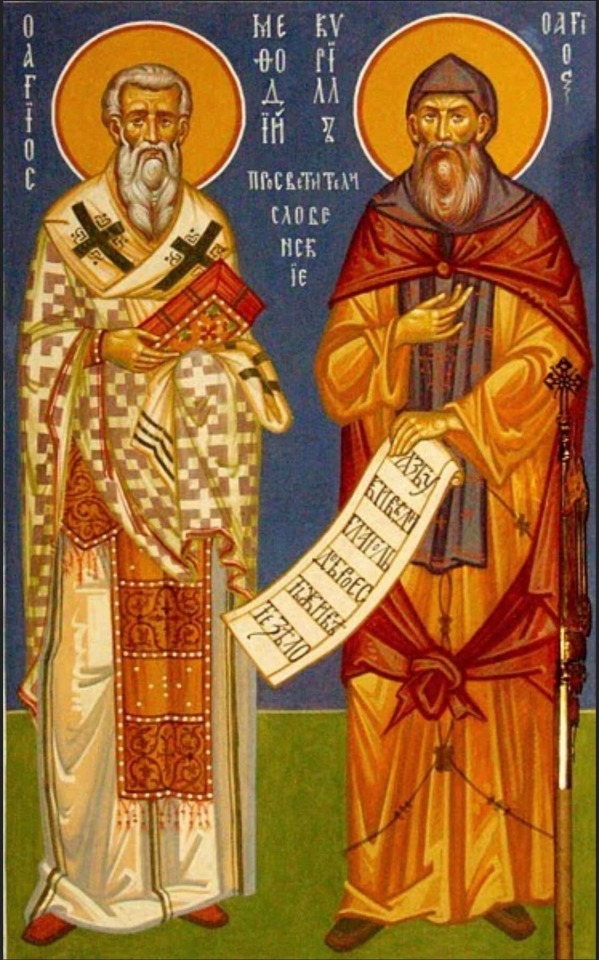
#father troy beecham#christianity#troy beecham episcopal#jesus#father troy beecham episcopal#saints#god#salvation#peace
2 notes
·
View notes
Text
Saints&Reading: Thu., Feb., 17, 2022
February 1_ February 4
THE MONK ISIDOR PELUSIOTES (436-440)
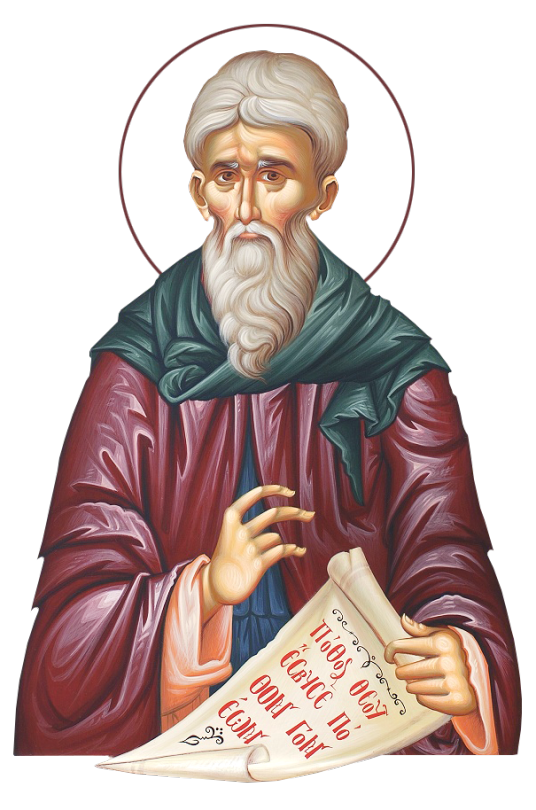
Saint Isidore of Pelusium lived during the fourth-fifth centuries. He was a native of Alexandria, and was raised among pious Christians. He was a relative of Theophilus, Archbishop of Alexandria, and of his successor, Saint Cyril (January 18). While still a youth he quit the world and withdrew to Egypt to Mount Pelusium, which became the site of his monastic efforts.
Saint Isidore’s spiritual wisdom and strict asceticism, combined with his broad learning and innate knowledge of the human soul, enabled him to win the respect and love of his fellow monks in a short time. They chose him as their head and had him ordained a priest (the earliest sources for his life, however, say nothing of him being an igumen).
Following the example of Saint John Chrysostom, whom he had managed to see and hear during a trip to Constantinople, Saint Isidore devoted himself primarily to Christian preaching, that “practical wisdom” which, in his own words, is both “the foundation of the edifice and the edifice itself”, while logic is “its embellishment, and contemplation its crown”.
He was a teacher and a willingly provided counsel for anyone who turned to him for spiritual encouragement, whether it was a simple man, a dignitary, a bishop, the Patriarch of Alexandria, or even the emperor. He left behind about 10,000 letters, of which 2,090 have survived. A large portion of these letters reveal profound theological thought and contain morally edifying interpretations of Holy Scripture. Saint Photius (February 6) calls Isidore a model of priestly and ascetical life, and also a master of style.
Saint Isidore’s love for Saint John Chrysostom resulted in his support of Saint John when he was persecuted by the empress Eudoxia and Archbishop Theophilus. After the death of Saint John, Saint Isidore persuaded Theophilus’ successor Saint Cyril to inscribe the name of Saint John Chrysostom into the Church diptychs as a confessor. Through the initiative of Saint Isidore the Third Ecumenical Council was convened at Ephesus (431), at which the false teaching of Nestorius concerning the person of Jesus Christ was condemned.
Saint Isidore lived into old age and died around the year 436. The Church historian Evagrius (sixth century) writes of Saint Isidore, “his life seemed to everyone the life of an angel upon the earth.” Another historian, Nikēphóros Callistus (ninth century), praises Saint Isidore thus: “He was a vital and inspired pillar of monastic rules and divine vision, and as such he presented a very lofty image of most fervent example and spiritual teaching.”
THE MONK NICHOLAS THE CONFESSOR, HEGUMEN OF THE STUDITE MONASTERY (868)
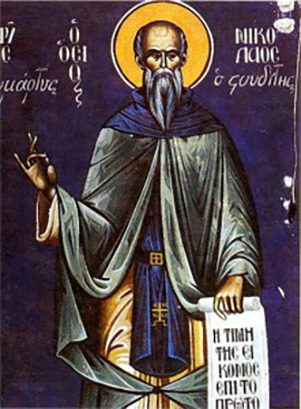
Saint Nicholas the Confessor, Igumen of the Studion Monastery, lived during the ninth century. He was born on the island of Crete in the village of Kedonia into a Christian family. When he was ten, his parents sent him to Constantinople to his uncle, Saint Theophanes (October 11), who was a monk at the Studion monastery. With the approval of Saint Theodore (November 11), the head of the Studion monastery, the boy was enrolled in the monastery school. When he finished school at sixteen years of age, he was tonsured a monk. After several years, he was ordained a priest.
During this time there was a fierce persecution, initiated by the Byzantine emperor Leo the Armenian (813-820), against those who venerated the holy icons. Saint Nicholas and Saint Theodore the Studite were repeatedly locked up in prison, tortured in various ways, and humiliated. However, they zealously continued to defend Orthodoxy.
Under the holy Empress Theodora (February 11), who ruled the realm while her son Michael was still a minor, icon veneration was restored, and a time of relative peace followed. Saint Nicholas returned to the Studite monastery and was chosen its head. But this calm did not last very long.
The Empress Theodora was removed from the throne, and the emperor’s uncle, Bardas, a man who defiled himself by open cohabitation with his son’s wife, came to power. The attempts of Patriarch Ignatius (October 23) to restrain the impiety of Bardas proved unsuccessful. On the contrary, he was deposed from the patriarchal throne and sent into exile.
Unwilling to witness the triumph of iniquity, Saint Nicholas left Constantinople. He spent seven years at various monasteries. Later on, he returned as a prisoner to the Studite monastery, where he spent two years imprisoned, until the death of the emperor Michael (855-867) and Bardas. When the emperor Basil I the Macedonian (867-886) ascended the throne, Saint Nicholas was set free, and again became igumen on the orders of the emperor. Because of his life as a confessor and ascetic he received from God the gift of healing, which continued even after his repose in the year 868.
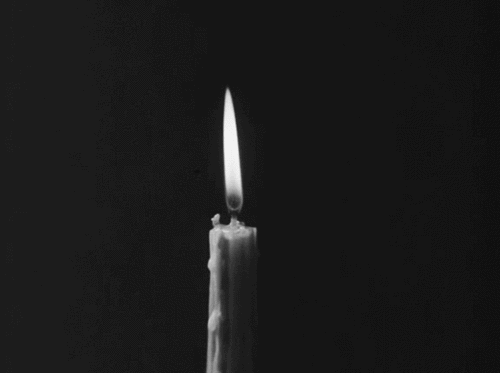
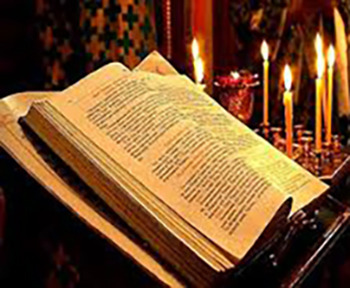
MARK 13:31-14:2
31Heaven and earth will pass away, but My words will by no means pass away. 32 But of that day and hour no one knows, not even the angels in heaven, nor the Son, but only the Father. 33 Take heed, watch and pray; for you do not know when the time is. 34 It is like a man going to a far country, who left his house and gave authority to his servants, and to each his work, and commanded the doorkeeper to watch. 35 Watch therefore, for you do not know when the master of the house is coming-in the evening, at midnight, at the crowing of the rooster, or in the morning- 36 lest, coming suddenly, he find you sleeping. 37 And what I say to you, I say to all: Watch!
1 After two days it was the Passover and the Feast of Unleavened Bread. And the chief priests and the scribes sought how they might take Him by trickery and put Him to death. 2 But they said, "Not during the feast, lest there be an uproar of the people."
1 JOHN 1:8-2:6
8 If we say that we have no sin, we deceive ourselves, and the truth is not in us. 9 If we confess our sins, He is faithful and just to forgive us our sins and to cleanse us from all unrighteousness. 10If we say that we have not sinned, we make Him a liar, and His word is not in us.
1 My little children, these things I write to you, so that you may not sin. And if anyone sins, we have an Advocate with the Father, Jesus Christ the righteous. 2 And He Himself is the propitiation for our sins, and not for ours only but also for the whole world. 3 Now by this we know that we know Him, if we keep His commandments. 4 He who says, "I know Him," and does not keep His commandments, is a liar, and the truth is not in him. 5 But whoever keeps His word, truly the love of God is perfected in him. By this we know that we are in Him. 6 He who says he abides in Him ought himself also to walk just as He walked.
1 note
·
View note
Text
Events 10.7
3761 BC – The epoch reference date epoch (origin) of the modern Hebrew calendar.
1403 – Venetian–Genoese wars: The Genoese fleet under a French admiral is defeated by a Venetian fleet.
1477 – Uppsala University is inaugurated after receiving its corporate rights from Pope Sixtus IV in February the same year.
1513 – War of the League of Cambrai: Spain defeats Venice.
1571 – The Battle of Lepanto is fought, and the Ottoman Navy suffers its first defeat.
1691 – The charter for the Province of Massachusetts Bay is issued.
1763 – King George III issues the Royal Proclamation of 1763, closing Indigenous lands in North America north and west of the Alleghenies to white settlements.
1777 – American Revolutionary War: The Americans defeat the British in the Second Battle of Saratoga, also known as the Battle of Bemis Heights.
1780 – American Revolutionary War: American militia defeat royalist irregulars led by British major Patrick Ferguson in South Carolina.
1800 – French corsair Robert Surcouf, commander of the 18-gun ship La Confiance, captures the British 38-gun Kent.
1826 – The Granite Railway begins operations as the first chartered railway in the U.S.
1828 – Morea expedition: The city of Patras, Greece, is liberated by the French expeditionary force.
1840 – Willem II becomes King of the Netherlands.
1864 – American Civil War: A US Navy ship captures a Confederate raider in a Brazilian seaport.
1868 – Cornell University holds opening day ceremonies; initial student enrollment is 412, the highest at any American university to that date.
1870 – Franco-Prussian War: Léon Gambetta escapes the siege of Paris in a hot-air balloon.
1879 – Germany and Austria-Hungary sign the "Twofold Covenant" and create the Dual Alliance.
1912 – The Helsinki Stock Exchange sees its first transaction.
1916 – Georgia Tech defeats Cumberland University 222–0 in the most lopsided college football game in American history.
1919 – KLM, the flag carrier of the Netherlands, is founded. It is the oldest airline still operating under its original name.
1924 – Andreas Michalakopoulos becomes prime minister of Greece for a short period of time.
1929 – Photius II becomes Ecumenical Patriarch of Constantinople.
1933 – Air France is inaugurated, after being formed by a merger of five French airlines.
1940 – World War II: The McCollum memo proposes bringing the United States into the war in Europe by provoking the Japanese to attack the United States.
1944 – World War II: During an uprising at Birkenau concentration camp, Jewish prisoners burn down Crematorium IV.
1949 – The communist German Democratic Republic (East Germany) is formed.
1950 – Mother Teresa establishes the Missionaries of Charity.
1958 – The 1958 Pakistani coup d'état inaugurates a prolonged period of military rule.
1958 – The U.S. manned space-flight project is renamed Project Mercury.
1959 – The Soviet probe Luna 3 transmits the first-ever photographs of the far side of the Moon.
1963 – President Kennedy signs the ratification of the Partial Nuclear Test Ban Treaty.
1977 – The Fourth Soviet Constitution is adopted.
1985 – The Mameyes landslide kills almost 200 people in Puerto Rico.
1985 – Four men from the Palestine Liberation Front hijack the MS Achille Lauro off the coast of Egypt.
1987 – Sikh nationalists declare the independence of Khalistan from India; it is not internationally recognized.
1988 – A hunter discovers three gray whales trapped under the ice near Alaska; the situation becomes a multinational effort to free the whales.
1991 – Croatian War of Independence: Bombing of Banski dvori in Zagreb, Croatia.
1993 – The flood of '93 ends at St. Louis, Missouri, 103 days after it began, as the Mississippi River falls below flood stage.
1996 – Fox News Channel begins broadcasting.
1998 – Matthew Shepard, a gay student at the University of Wyoming, is found tied to a fence after being savagely beaten by two young adults in Laramie, Wyoming. He died five days later.
2000 – Israeli-Palestinian conflict: Hezbollah militants capture three Israeli Defense Force soldiers in a cross-border raid.
2001 – The U.S. invasion of Afghanistan begins with an air assault and covert operations on the ground.
2002 – The Space Shuttle Atlantis launches on STS-112 to continue assembly of the International Space Station.
2008 – Asteroid 2008 TC3 impacts the Earth over Sudan, the first time an asteroid impact is detected prior to its entry into earth's atmosphere.
2016 – In the wake of Hurricane Matthew, the death toll rises to 800.
0 notes
Text
Events 10.7
3761 BC – The epoch reference date epoch (origin) of the modern Hebrew calendar.
1403 – Venetian–Genoese wars: The Genoese fleet under a French admiral is defeated by a Venetian fleet.
1477 – Uppsala University is inaugurated after receiving its corporate rights from Pope Sixtus IV in February the same year.
1513 – War of the League of Cambrai: Spain defeats Venice.
1571 – The Battle of Lepanto is fought, and the Ottoman Navy suffers its first defeat.
1691 – The charter for the Province of Massachusetts Bay is issued.
1763 – King George III issues the Royal Proclamation of 1763, closing aboriginal lands in North America north and west of the Alleghenies to white settlements.
1777 – American Revolutionary War: The Americans defeat the British in the Second Battle of Saratoga, also known as the Battle of Bemis Heights.
1780 – American Revolutionary War: American militia defeat royalist irregulars led by British major Patrick Ferguson in South Carolina.
1800 – French corsair Robert Surcouf, commander of the 18-gun ship La Confiance, captures the British 38-gun Kent.
1826 – The Granite Railway begins operations as the first chartered railway in the U.S.
1828 – Morea expedition: The city of Patras, Greece, is liberated by the French expeditionary force.
1840 – Willem II becomes King of the Netherlands.
1864 – American Civil War: A US Navy ship captures a Confederate raider in a Brazilian seaport.
1868 – Cornell University holds opening day ceremonies; initial student enrollment is 412, the highest at any American university to that date.
1870 – Franco-Prussian War: Léon Gambetta escapes the siege of Paris in a hot-air balloon.
1879 – Germany and Austria-Hungary sign the "Twofold Covenant" and create the Dual Alliance.
1912 – The Helsinki Stock Exchange sees its first transaction.
1916 – Georgia Tech defeats Cumberland University 222–0 in the most lopsided college football game in American history.
1919 – KLM, the flag carrier of the Netherlands, is founded. It is the oldest airline still operating under its original name.
1924 – Andreas Michalakopoulos becomes prime minister of Greece for a short period of time.
1929 – Photius II becomes Ecumenical Patriarch of Constantinople.
1933 – Air France is inaugurated, after being formed by a merger of five French airlines.
1940 – World War II: The McCollum memo proposes bringing the United States into the war in Europe by provoking the Japanese to attack the United States.
1944 – World War II: During an uprising at Birkenau concentration camp, Jewish prisoners burn down Crematorium IV.
1949 – The communist German Democratic Republic (East Germany) is formed.
1950 – Mother Teresa establishes the Missionaries of Charity.
1958 – The 1958 Pakistani coup d'état inaugurates a prolonged period of military rule.
1958 – The U.S. manned space-flight project is renamed Project Mercury.
1959 – The Soviet probe Luna 3 transmits the first-ever photographs of the far side of the Moon.
1963 – President Kennedy signs the ratification of the Partial Nuclear Test Ban Treaty.
1977 – The Fourth Soviet Constitution is adopted.
1985 – The Mameyes landslide kills almost 200 people in Puerto Rico.
1985 – Four men from the Palestine Liberation Front hijack the MS Achille Lauro off the coast of Egypt.
1987 – Sikh nationalists declare the independence of Khalistan from India; it is not internationally recognized.
1988 – A hunter discovers three gray whales trapped under the ice near Alaska; the situation becomes a multinational effort to free the whales.
1991 – Croatian War of Independence: Bombing of Banski dvori in Zagreb, Croatia.
1993 – The flood of '93 ends at St. Louis, Missouri, 103 days after it began, as the Mississippi River falls below flood stage.
1996 – Fox News Channel begins broadcasting.
1998 – Matthew Shepard, a gay student at the University of Wyoming, is found tied to a fence after being savagely beaten by two young adults in Laramie, Wyoming.
2001 – The U.S. invasion of Afghanistan begins with an air assault and covert operations on the ground.
2003 – The governor of California, Gray Davis, is recalled in favor of Arnold Schwarzenegger.
2008 – Asteroid 2008 TC3 impacts the Earth over Sudan, the first time an asteroid impact is detected prior to its entry into earth's atmosphere.
2016 – In the wake of Hurricane Matthew, the death toll rises to 800.
0 notes
Text
Events 10.7
3761 BC – The epoch reference date epoch (origin) of the modern Hebrew calendar (Proleptic Julian calendar).
1403 – Battle of Modon: Genoese fleet under Jean Le Maingre (Marshal Boucicaut) is defeated by the Republic of Venice at Modon in the Peloponnese.
1406 – French troops comprising 1,000 men at arms landed on Jersey and fought a battle against 3,000 defenders.
1477 – Uppsala University is inaugurated after receiving its corporate rights from Pope Sixtus IV in February the same year.
1513 – Battle of La Motta: Spanish troops under Ramón de Cardona defeat the Venetians.
1542 – Explorer Cabrillo discovers Santa Catalina Island off of the California coast.
1571 – The Battle of Lepanto is fought, and the Ottoman Navy suffers its first defeat.
1582 – Because of the implementation of the Gregorian calendar, this day is skipped in Italy, Poland, Portugal and Spain.
1691 – The English royal charter for the Province of Massachusetts Bay is issued.
1763 – King George III of the United Kingdom issues the Royal Proclamation of 1763, closing aboriginal lands in North America north and west of the Alleghenies to white settlements.
1777 – American Revolutionary War: The Americans defeat the British in the Second Battle of Saratoga, also known as the Battle of Bemis Heights.
1780 – American Revolutionary War: Battle of Kings Mountain: American Patriot militia defeat Loyalist irregulars led by British major Patrick Ferguson in South Carolina.
1800 – French corsair Robert Surcouf, commander of the 18-gun ship La Confiance, captures the British 38-gun Kent inspiring the traditional French song Le Trente-et-un du mois d'août.
1826 – The Granite Railway begins operations as the first chartered railway in the U.S.
1828 – Morea expedition: The city of Patras, Greece, is liberated by the French expeditionary force in the Peloponnese under General Maison.
1840 – Willem II becomes King of the Netherlands.
1862 – Royal Columbian Hospital (RCH) opens as the first hospital in the Colony of British Columbia
1864 – American Civil War: Bahia incident: USS Wachusett illegally captures the CSS Florida Confederate raider while in port in Bahia, Brazil in violation of Brazilian neutrality.
1868 – Cornell University holds opening day ceremonies; initial student enrollment is 412, the highest at any American university to that date.
1870 – Franco-Prussian War: Siege of Paris: Léon Gambetta flees Paris in a hot-air balloon.
1879 – Germany and Austria-Hungary sign the "Twofold Covenant" and create the Dual Alliance.
1912 – The Helsinki Stock Exchange sees its first transaction.
1916 – Georgia Tech defeats Cumberland University 222–0 in the most lopsided college football game in American history.
1918 – The Regency Council of the Kingdom of Poland declares independence from the German Empire and forms the Republic of Poland.
1919 – KLM, the flag carrier of the Netherlands, is founded. It is the oldest airline still operating under its original name.
1924 – Andreas Michalakopoulos becomes Prime Minister of Greece for a short period of time.
1929 – Photius II becomes Ecumenical Patriarch of Constantinople.
1933 – Air France is inaugurated, after being formed by a merger of five French airlines.
1940 – World War II: The McCollum memo proposes bringing the United States into the war in Europe by provoking the Japanese to attack the United States.
1942 – World War II: The October Matanikau action on Guadalcanal begins as United States Marine Corps forces attack Imperial Japanese Army units along the Matanikau River.
1944 – World War II: During an uprising at Birkenau concentration camp, Jewish prisoners burn down Crematorium IV.
1949 – The communist German Democratic Republic (East Germany) is formed.
1950 – Mother Teresa establishes the Missionaries of Charity.
1958 – President of Pakistan Iskander Mirza, with the support of General Ayub Khan and the army, suspends the 1956 constitution, imposes martial law, and cancels the elections scheduled for January 1959.
1958 – The U.S. manned space-flight project is renamed Project Mercury.
1959 – U.S.S.R. probe Luna 3 transmits the first ever photographs of the far side of the Moon.
1963 – John F. Kennedy signs the ratification of the Partial Nuclear Test Ban Treaty.
1977 – The adoption of the Fourth Soviet Constitution.
1985 – The Mameyes landslide kills almost 200 people in Puerto Rico.
1987 – Sikh nationalists declares the independence of Khalistan from India; it is not internationally recognized.
1988 – An Iñupiat hunter discovers three gray whales trapped under the ice in Barrow, Alaska, US; the situation becomes a multinational effort to free the whales.
1993 – The flood of '93 ends at St. Louis, Missouri, 103 days after it began, as the Mississippi River falls below flood stage.
1996 – Fox News Channel begins broadcasting.
1998 – Matthew Shepard, a gay student at the University of Wyoming, is found tied to a fence after being savagely beaten by two young adults in Laramie, Wyoming.
2001 – The Global War on Terrorism begins as a result of the September 11 attacks. The U.S. invasion of Afghanistan initiates with an air assault and covert operations on the ground.
2003 – The governor of California, Gray Davis, is recalled in favor of Arnold Schwarzenegger.
2008 – Asteroid 2008 TC3 impacts the Earth over Sudan, the first time an asteroid impact is detected prior to its entry into earth's atmosphere.
2016 – In the wake of Hurricane Matthew, the death toll rises to 800.
0 notes